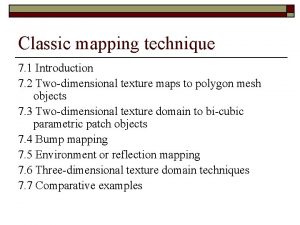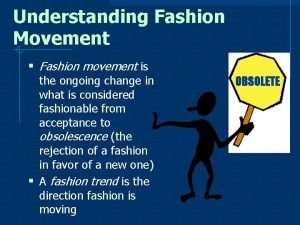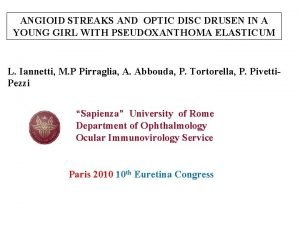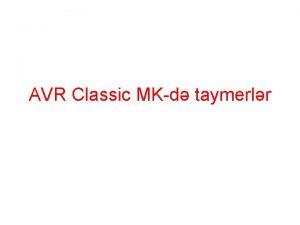Q l Angioid Streaks What is the classic
















































































































































































- Slides: 176

Q l Angioid Streaks What is the classic DFE appearance of angioid streaks? 1

A l Angioid Streaks What is the classic DFE appearance of angioid streaks? Reddish-brown lines radiating out from the (atrophic) peripapillary region 2

Q l Angioid Streaks What is the classic DFE appearance of angioid streaks? Reddish-brown lines radiating out from the (atrophic) peripapillary region Why are they called ‘angioid’ streaks? 3

A l Angioid Streaks What is the classic DFE appearance of angioid streaks? Reddish-brown lines radiating out from the (atrophic) peripapillary region Why are they called ‘angioid’ streaks? Because the streaks resemble blood vessels 4

Angioid Streaks Angioid streaks (arrowheads). Note that only a few of the many present have been marked.

Q l Angioid Streaks What is the classic DFE appearance of angioid streaks? Reddish-brown lines radiating out from the (atrophic) peripapillary region bilaterally? unilaterally? Does angioid streaks present unilaterally, or bilaterally? 6

A l Angioid Streaks What is the classic DFE appearance of angioid streaks? Reddish-brown lines radiating out from the (atrophic) peripapillary region bilaterally? unilaterally? Does angioid streaks present unilaterally, or bilaterally? Bilaterally 7

Q l Angioid Streaks What is the classic DFE appearance of angioid streaks? Reddish-brown lines radiating out from the (atrophic) peripapillary region bilaterally? unilaterally? Does angioid streaks present unilaterally, or bilaterally? Bilaterally With what symptom(s) does/do angioid streaks present? 8

A l Angioid Streaks What is the classic DFE appearance of angioid streaks? Reddish-brown lines radiating out from the (atrophic) peripapillary region bilaterally? unilaterally? Does angioid streaks present unilaterally, or bilaterally? Bilaterally With what symptom(s) does/do angioid streaks present? Nothing—it is asymptomatic (until/unless the fovea is involved) 9

Q l Angioid Streaks What is the classic DFE appearance of angioid streaks? Reddish-brown lines radiating out from the (atrophic) peripapillary region bilaterally? unilaterally? Does angioid streaks present unilaterally, or bilaterally? Bilaterally With what symptom(s) does/do angioid streaks present? Nothing—it is asymptomatic (until/unless the fovea is involved) Can angioid streaks occur congenitally? 10

A l Angioid Streaks What is the classic DFE appearance of angioid streaks? Reddish-brown lines radiating out from the (atrophic) peripapillary region bilaterally? unilaterally? Does angioid streaks present unilaterally, or bilaterally? Bilaterally With what symptom(s) does/do angioid streaks present? Nothing—it is asymptomatic (until/unless the fovea is involved) Can angioid streaks occur congenitally? Apparently not—there has never been a reported case of their presence in the fundus of an infant 11

Q l l Angioid Streaks What is the classic DFE appearance of angioid streaks? Reddish-brown lines radiating out from the (atrophic) peripapillary region Which layer of the retina is abnormal? 12

A l l Angioid Streaks What is the classic DFE appearance of angioid streaks? Reddish-brown lines radiating out from the (atrophic) peripapillary region Which layer of the retina is abnormal? Bruch’s membrane 13

Angioid Streaks l l What is the classic DFE appearance of angioid streaks? Reddish-brown lines radiating out from the (atrophic) peripapillary region Which layer of the retina is abnormal? Bruch’s membrane Let’s briefly review the anatomy of Bruch’s membrane… 14

Q Angioid Streaks Bruch’s membrane What are the five layers of Bruch’s membrane? 1) 2) 3) 4) 5) (Start here) Innermost Outermost 15

Q/A Angioid Streaks Bruch’s membrane What are the five layers of Bruch’s membrane? two words l Basement membrane of RPE 1) 2) 3) 4) 5) Innermost Outermost 16

A Angioid Streaks Bruch’s membrane What are the five layers of Bruch’s membrane? l Basement membrane of RPE 1) 2) (Next) 3) 4) 5) Innermost Outermost 17

Q/A Angioid Streaks Bruch’s membrane What are the five layers of Bruch’s membrane? l Basement membrane of RPE 1) one word l Inner collagenous layer 2) 3) 4) 5) Innermost Outermost 18

A Angioid Streaks Bruch’s membrane What are the five layers of Bruch’s membrane? l Basement membrane of RPE 1) l Inner collagenous layer 2) 3) (Next) 4) 5) Innermost Outermost 19

Q/A Angioid Streaks Bruch’s membrane What are the five layers of Bruch’s membrane? l Basement membrane of RPE 1) l Inner collagenous layer 2) l Elastic layer 3) 4) 5) Innermost diff one word Outermost 20

A Angioid Streaks Bruch’s membrane What are the five layers of Bruch’s membrane? l Basement membrane of RPE 1) l Inner collagenous layer 2) l Elastic layer 3) 4) (Next) 5) Innermost Outermost 21

Q/A Angioid Streaks Bruch’s membrane What are the five layers of Bruch’s membrane? l Basement membrane of RPE 1) l Inner collagenous layer 2) l Elastic layer 3) one familiar word l Outer collagenous layer 4) 5) Innermost Outermost 22

A Angioid Streaks Bruch’s membrane What are the five layers of Bruch’s membrane? l Basement membrane of RPE 1) l Inner collagenous layer 2) l Elastic layer 3) l Outer collagenous layer 4) 5) (Next) Innermost Outermost 23

Q/A Angioid Streaks Bruch’s membrane What are the five layers of Bruch’s membrane? l Basement membrane of RPE 1) l Inner collagenous layer 2) l Elastic layer 3) l Outer collagenous layer 4) two familiar words l Basement membrane of choriocapillaris 5) Innermost Outermost 24

A Angioid Streaks Bruch’s membrane What are the five layers of Bruch’s membrane? l Basement membrane of RPE 1) l Inner collagenous layer 2) l Elastic layer 3) l Outer collagenous layer 4) l Basement membrane of choriocapillaris 5) Innermost Outermost 25

Q Angioid Streaks What are the five layers of Bruch’s membrane? Bruch’s membrane 0) ? What (non-Bruch’s) structure goes here? The RPE cells themselves l Basement membrane of RPE 1) l Inner collagenous layer 2) l Elastic layer 3) l Outer collagenous layer 4) l Basement membrane of choriocapillaris 5) Innermost Outermost 26

A Angioid Streaks What are the five layers of Bruch’s membrane? Bruch’s membrane 0) RPE cells What (non-Bruch’s) structure goes here? The RPE cells themselves l Basement membrane of RPE 1) l Inner collagenous layer 2) l Elastic layer 3) l Outer collagenous layer 4) l Basement membrane of choriocapillaris 5) Innermost Outermost 27

Q Angioid Streaks -1) ? What (non-RPE) structures go here? The photoreceptor outer segments What are the five layers of Bruch’s membrane? Bruch’s membrane 0) RPE cells l Basement membrane of RPE 1) l Inner collagenous layer 2) l Elastic layer 3) l Outer collagenous layer 4) l Basement membrane of choriocapillaris 5) Innermost Outermost 28

A Angioid Streaks -1) PR outer segs What (non-RPE) structures go here? The photoreceptor outer segments What are the five layers of Bruch’s membrane? Bruch’s membrane 0) RPE cells l Basement membrane of RPE 1) l Inner collagenous layer 2) l Elastic layer 3) l Outer collagenous layer 4) l Basement membrane of choriocapillaris 5) Innermost Outermost 29

Q Angioid Streaks -2) ? What cell type is this? Bipolar cells -1) PR outer segs What are the five layers of Bruch’s membrane? Bruch’s membrane 0) RPE cells l Basement membrane of RPE 1) l Inner collagenous layer 2) l Elastic layer 3) l Outer collagenous layer 4) l Basement membrane of choriocapillaris 5) Innermost Outermost 30

A Angioid Streaks -2) Bipolar cells What cell type is this? Bipolar cells -1) PR outer segs What are the five layers of Bruch’s membrane? Bruch’s membrane 0) RPE cells l Basement membrane of RPE 1) l Inner collagenous layer 2) l Elastic layer 3) l Outer collagenous layer 4) l Basement membrane of choriocapillaris 5) Innermost Outermost 31

Q Angioid Streaks -2) Bipolar cells -1) PR outer segs What are the five layers of Bruch’s membrane? Bruch’s membrane 0) RPE cells l Basement membrane of RPE 1) l Inner collagenous layer 2) l Elastic layer 3) l Outer collagenous layer 4) l Basement membrane of choriocapillaris 5) -6) Chorio ? Innermost Outermost What structure is this? The choriocapillaris 32

A Angioid Streaks -2) Bipolar cells -1) PR outer segs What are the five layers of Bruch’s membrane? Bruch’s membrane 0) RPE cells l Basement membrane of RPE 1) l Inner collagenous layer 2) l Elastic layer 3) l Outer collagenous layer 4) l Basement membrane of choriocapillaris 5) -6) Choriocapillaris Innermost Outermost What structure is this? The choriocapillaris 33

Q Angioid Streaks -2) Bipolar cells -1) PR outer segs What are the five layers of Bruch’s membrane? Bruch’s membrane 0) RPE cells l Basement membrane of RPE 1) l Inner collagenous layer 2) l Elastic layer 3) l Outer collagenous layer 4) l Basement membrane of choriocapillaris 5) -6) -7) Choriocapillaris Choro ? Innermost Outermost What structure is this? 34 The choroid

A Angioid Streaks -2) Bipolar cells -1) PR outer segs What are the five layers of Bruch’s membrane? Bruch’s membrane 0) RPE cells l Basement membrane of RPE 1) l Inner collagenous layer 2) l Elastic layer 3) l Outer collagenous layer 4) l Basement membrane of choriocapillaris 5) -6) -7) Choriocapillaris Choroid Innermost Outermost What structure is this? 35 The choroid

Q l l Angioid Streaks What is the classic DFE appearance of angioid streaks? Reddish-brown lines radiating out from the (atrophic) peripapillary region Which layer of the retina is abnormal? Bruch’s membrane What’s abnormal about Bruch’s in angioid streaks? --- 36

Q/A l l Angioid Streaks What is the classic DFE appearance of angioid streaks? Reddish-brown lines radiating out from the (atrophic) peripapillary region Which layer of the retina is abnormal? Bruch’s membrane What’s abnormal about Bruch’s in angioid streaks? --It is…[thickened vs thinned] --It is…[common pathologic process] 37

A l l Angioid Streaks What is the classic DFE appearance of angioid streaks? Reddish-brown lines radiating out from the (atrophic) peripapillary region Which layer of the retina is abnormal? Bruch’s membrane What’s abnormal about Bruch’s in angioid streaks? --It is…thickened --It is…calcified (and thus brittle) 38

Q l l Angioid Streaks What is the classic DFE appearance of angioid streaks? Reddish-brown lines radiating out from the (atrophic) peripapillary region Which layer of the retina is abnormal? Bruch’s membrane What’s abnormal about Bruch’s in angioid streaks? --It is…thickened --It is…calcified (and thus brittle) How are angioid streaks related to Bruch’s? Angioid streaks represent breaks in the brittle Bruch’s 39

A l l Angioid Streaks What is the classic DFE appearance of angioid streaks? Reddish-brown lines radiating out from the (atrophic) peripapillary region Which layer of the retina is abnormal? Bruch’s membrane What’s abnormal about Bruch’s in angioid streaks? --It is…thickened --It is…calcified (and thus brittle) How are angioid streaks related to Bruch’s? Angioid streaks represent breaks in the brittle Bruch’s 40

Q l l Angioid Streaks What is the classic DFE appearance of angioid streaks? Reddish-brown lines radiating out from the (atrophic) peripapillary region Which layer of the retina is abnormal? Bruch’s membrane What’s abnormal about Bruch’s in angioid streaks? --It is…thickened --It is…calcified (and thus brittle) How are angioid streaks related to Bruch’s? Angioid streaks represent breaks in the brittle Bruch’s What serious complications can result from the breaks in Bruch’s? Choroidal neovascular membrane 41

A l l Angioid Streaks What is the classic DFE appearance of angioid streaks? Reddish-brown lines radiating out from the (atrophic) peripapillary region Which layer of the retina is abnormal? Bruch’s membrane What’s abnormal about Bruch’s in angioid streaks? --It is…thickened --It is…calcified (and thus brittle) How are angioid streaks related to Bruch’s? Angioid streaks represent breaks in the brittle Bruch’s What serious complications can result from the breaks in Bruch’s? Choroidal neovascular membrane and subretinal hemorrhage 42

QA l l Angioid Streaks What is the classic DFE appearance of angioid streaks? Reddish-brown lines radiating out from the (atrophic) peripapillary region Which layer of the retina is abnormal? Bruch’s membrane What’s abnormal about Bruch’s in angioid streaks? --It is…thickened --It is…calcified (and thus brittle) How are angioid streaks related to Bruch’s? Angioid streaks represent breaks in the brittle Bruch’s What serious complications can result from the breaks in Bruch’s? Choroidal neovascular membrane and subretinal hemorrhage To be clear: Does this refer to hemorrhage not related to a CNVM? 43

QA l l Angioid Streaks What is the classic DFE appearance of angioid streaks? Reddish-brown lines radiating out from the (atrophic) peripapillary region Which layer of the retina is abnormal? Bruch’s membrane What’s abnormal about Bruch’s in angioid streaks? --It is…thickened --It is…calcified (and thus brittle) How are angioid streaks related to Bruch’s? Angioid streaks represent breaks in the brittle Bruch’s What serious complications can result from the breaks in Bruch’s? Choroidal neovascular membrane and subretinal hemorrhage To be clear: Does this refer to hemorrhage not related to a CNVM? Yes 44

Q l l Angioid Streaks What is the classic DFE appearance of angioid streaks? Reddish-brown lines radiating out from the (atrophic) peripapillary region Which layer of the retina is abnormal? Bruch’s membrane What’s abnormal about Bruch’s in angioid streaks? --It is…thickened --It is…calcified (and thus brittle) How are angioid streaks related to Bruch’s? Angioid streaks represent breaks in the brittle Bruch’s What serious complications can result from the breaks in Bruch’s? Choroidal neovascular membrane and subretinal hemorrhage Is CNVM a common occurrence in angioid streaks? Indeed it is—estimates of CNVM prevalence in angioid streaks run as high as 80% 45

Q/A l l Angioid Streaks What is the classic DFE appearance of angioid streaks? Reddish-brown lines radiating out from the (atrophic) peripapillary region Which layer of the retina is abnormal? Bruch’s membrane What’s abnormal about Bruch’s in angioid streaks? --It is…thickened --It is…calcified (and thus brittle) How are angioid streaks related to Bruch’s? Angioid streaks represent breaks in the brittle Bruch’s What serious complications can result from the breaks in Bruch’s? Choroidal neovascular membrane and subretinal hemorrhage Is CNVM a common occurrence in angioid streaks? Indeed it is—estimates of CNVM prevalence in % angioid streaks run as high as 80% 46

A l l Angioid Streaks What is the classic DFE appearance of angioid streaks? Reddish-brown lines radiating out from the (atrophic) peripapillary region Which layer of the retina is abnormal? Bruch’s membrane What’s abnormal about Bruch’s in angioid streaks? --It is…thickened --It is…calcified (and thus brittle) How are angioid streaks related to Bruch’s? Angioid streaks represent breaks in the brittle Bruch’s What serious complications can result from the breaks in Bruch’s? Choroidal neovascular membrane and subretinal hemorrhage Is CNVM a common occurrence in angioid streaks? Indeed it is—estimates of CNVM prevalence in angioid streaks run as high as 80% 47

Q l l Angioid Streaks What is the classic DFE appearance of angioid streaks? Reddish-brown lines radiating out from the (atrophic) peripapillary region Which layer of the retina is abnormal? Bruch’s membrane What’s abnormal about Bruch’s in angioid streaks? --It is…thickened --It is…calcified (and thus brittle) How are angioid streaks related to Bruch’s? Angioid streaks represent breaks in the brittle Bruch’s What serious complications can result from the breaks in Bruch’s? Choroidal neovascular membrane and subretinal hemorrhage Is CNVM a common occurrence in angioid streaks? Indeed it is—estimates of CNVM prevalence in angioid streaks run as high as 80% Does CNVM in angioid streaks carry a good, or poor prognosis? Poor 48

A l l Angioid Streaks What is the classic DFE appearance of angioid streaks? Reddish-brown lines radiating out from the (atrophic) peripapillary region Which layer of the retina is abnormal? Bruch’s membrane What’s abnormal about Bruch’s in angioid streaks? --It is…thickened --It is…calcified (and thus brittle) How are angioid streaks related to Bruch’s? Angioid streaks represent breaks in the brittle Bruch’s What serious complications can result from the breaks in Bruch’s? Choroidal neovascular membrane and subretinal hemorrhage Is CNVM a common occurrence in angioid streaks? Indeed it is—estimates of CNVM prevalence in angioid streaks run as high as 80% Does CNVM in angioid streaks carry a good, or poor prognosis? Poor 49

Angioid Streaks l l What is the classic DFE appearance of angioid streaks? Reddish-brown lines radiating out from the (atrophic) peripapillary region Which layer of the retina is abnormal? Bruch’s membrane Does the brittleness of Bruch’s… predispose these eyes to traumatic choroidal rupture with subsequent CNVM development? Indeed it does What’s abnormal about Bruch’s in angioid streaks? --It is…thickened --It is…calcified (and thus brittle) Are there steps the managing ophthalmologist should take in this regard? How are angioid streaks related to Bruch’s? Encourage the use of safety glasses, and Angioid streaks represent breaks in the brittle Bruch’s the avoidance of risky activities What serious complications can result from the breaks in Bruch’s? Choroidal neovascular membrane and subretinal hemorrhage Is CNVM a common occurrence in angioid streaks? Indeed it is—estimates of CNVM prevalence in angioid streaks run as high as 80% Does CNVM in angioid streaks carry a good, or poor prognosis? Poor 50

Q l l Angioid Streaks What is the classic DFE appearance of angioid streaks? Reddish-brown lines radiating out from the (atrophic) peripapillary region Which layer of the retina is abnormal? Bruch’s membrane Does the brittleness of Bruch’s… predispose these eyes to traumatic choroidal rupture with subsequent CNVM development? Indeed it does What’s abnormal about Bruch’s in angioid streaks? --It is…thickened --It is…calcified (and thus brittle) Are there steps the managing ophthalmologist should take in this regard? How are angioid streaks related to Bruch’s? Encourage the use of safety glasses, and Angioid streaks represent breaks in the brittle Bruch’s the avoidance of risky activities What serious complications can result from the breaks in Bruch’s? Choroidal neovascular membrane and subretinal hemorrhage Is CNVM a common occurrence in angioid streaks? Indeed it is—estimates of CNVM prevalence in angioid streaks run as high as 80% Does CNVM in angioid streaks carry a good, or poor prognosis? Poor 51

A l l Angioid Streaks What is the classic DFE appearance of angioid streaks? Reddish-brown lines radiating out from the (atrophic) peripapillary region Which layer of the retina is abnormal? Bruch’s membrane Does the brittleness of Bruch’s… predispose these eyes to traumatic choroidal rupture with subsequent CNVM development? Indeed it does What’s abnormal about Bruch’s in angioid streaks? --It is…thickened --It is…calcified (and thus brittle) Are there steps the managing ophthalmologist should take in this regard? How are angioid streaks related to Bruch’s? Encourage the use of safety glasses, and Angioid streaks represent breaks in the brittle Bruch’s the avoidance of risky activities What serious complications can result from the breaks in Bruch’s? Choroidal neovascular membrane and subretinal hemorrhage Is CNVM a common occurrence in angioid streaks? Indeed it is—estimates of CNVM prevalence in angioid streaks run as high as 80% Does CNVM in angioid streaks carry a good, or poor prognosis? Poor 52

Q l l Angioid Streaks What is the classic DFE appearance of angioid streaks? Reddish-brown lines radiating out from the (atrophic) peripapillary region Which layer of the retina is abnormal? Bruch’s membrane Does the brittleness of Bruch’s… predispose these eyes to traumatic choroidal rupture with subsequent CNVM development? Indeed it does What’s abnormal about Bruch’s in angioid streaks? --It is…thickened --It is…calcified (and thus brittle) Are there steps the managing ophthalmologist should take in this regard? How are angioid streaks related to Bruch’s? Encourage the use of safety glasses, and Angioid streaks represent breaks in the brittle Bruch’s the avoidance of risky activities What serious complications can result from the breaks in Bruch’s? Choroidal neovascular membrane and subretinal hemorrhage Is CNVM a common occurrence in angioid streaks? Indeed it is—estimates of CNVM prevalence in angioid streaks run as high as 80% Does CNVM in angioid streaks carry a good, or poor prognosis? Poor 53

A l l Angioid Streaks What is the classic DFE appearance of angioid streaks? Reddish-brown lines radiating out from the (atrophic) peripapillary region Which layer of the retina is abnormal? Bruch’s membrane Does the brittleness of Bruch’s… predispose these eyes to traumatic choroidal rupture with subsequent CNVM development? Indeed it does What’s abnormal about Bruch’s in angioid streaks? --It is…thickened --It is…calcified (and thus brittle) Are there steps the managing ophthalmologist should take in this regard? How are angioid streaks related to Bruch’s? Encourage the use of safety glasses, and Angioid streaks represent breaks in the brittle Bruch’s the avoidance of risky activities What serious complications can result from the breaks in Bruch’s? Choroidal neovascular membrane and subretinal hemorrhage Is CNVM a common occurrence in angioid streaks? Indeed it is—estimates of CNVM prevalence in angioid streaks run as high as 80% Does CNVM in angioid streaks carry a good, or poor prognosis? Poor 54

Q l l Angioid Streaks What is the classic DFE appearance of angioid streaks? Reddish-brown lines radiating out from the (atrophic) peripapillary region Which layer of the retina is abnormal? Bruch’s membrane What is the typical appearance of angioid streaks on FA? The streaks hyperfluoresce early due to a What’s windowabnormal defect, about Bruch’s in angioid streaks? and late due to staining --It is…thickened --It is…calcified (and thus brittle) Of course, if a CNVM develops, it will hyperfluoresce during the choroidal phase How are angioid streaks related to Bruch’s? Angioid streaks represent breaks in the brittle Bruch’s What serious complications can result from the breaks in Bruch’s? Choroidal neovascular membrane and subretinal hemorrhage Is CNVM a common occurrence in angioid streaks? Indeed it is—estimates of CNVM prevalence in angioid streaks run as high as 80% Does CNVM in angioid streaks carry a good, or poor prognosis? Poor 55

Q/A l l Angioid Streaks What is the classic DFE appearance of angioid streaks? Reddish-brown lines radiating out from the (atrophic) peripapillary region Which layer of the retina is abnormal? Bruch’s membrane What is the typical appearance of angioid streaks on FA? hypo- v hyperfluoresce The streaks hyperfluoresce early due to a What’s windowabnormal defect, about Bruch’s in angioid streaks? and late due to staining mechanism --It is…thickened --It is…calcified (and thus brittle) Of course, if a CNVM develops, it will hyperfluoresce during the choroidal phase How are angioid streaks related to Bruch’s? Angioid streaks represent breaks in the brittle Bruch’s What serious complications can result from the breaks in Bruch’s? Choroidal neovascular membrane and subretinal hemorrhage Is CNVM a common occurrence in angioid streaks? Indeed it is—estimates of CNVM prevalence in angioid streaks run as high as 80% Does CNVM in angioid streaks carry a good, or poor prognosis? Poor 56

A l l Angioid Streaks What is the classic DFE appearance of angioid streaks? Reddish-brown lines radiating out from the (atrophic) peripapillary region Which layer of the retina is abnormal? Bruch’s membrane What is the typical appearance of angioid streaks on FA? The streaks hyperfluoresce early due to a What’s windowabnormal defect, about Bruch’s in angioid streaks? and late due to staining --It is…thickened --It is…calcified (and thus brittle) Of course, if a CNVM develops, it will hyperfluoresce during the choroidal phase How are angioid streaks related to Bruch’s? Angioid streaks represent breaks in the brittle Bruch’s What serious complications can result from the breaks in Bruch’s? Choroidal neovascular membrane and subretinal hemorrhage Is CNVM a common occurrence in angioid streaks? Indeed it is—estimates of CNVM prevalence in angioid streaks run as high as 80% Does CNVM in angioid streaks carry a good, or poor prognosis? Poor 57

Angioid Streaks Early Late FA

Q l l Angioid Streaks What is the classic DFE appearance of angioid streaks? Reddish-brown lines radiating out from the (atrophic) peripapillary region Which layer of the retina is abnormal? Bruch’s membrane What is the typical appearance of angioid streaks on FA? The streaks hyperfluoresce early due to a What’s windowabnormal defect, about Bruch’s in angioid streaks? and late due to staining --It is…thickened --It is…calcified (and thus brittle) Of course, if a CNVM develops, it will hyperfluoresce during the choroidal phase How are angioid streaks related to Bruch’s? hypo- v hyperfluoresce Angioid streaks represent breaks in the brittle Bruch’s What serious complications can result from the breaks in Bruch’s? Choroidal neovascular membrane and subretinal hemorrhage Is CNVM a common occurrence in angioid streaks? Indeed it is—estimates of CNVM prevalence in angioid streaks run as high as 80% Does CNVM in angioid streaks carry a good, or poor prognosis? Poor 59

A l l Angioid Streaks What is the classic DFE appearance of angioid streaks? Reddish-brown lines radiating out from the (atrophic) peripapillary region Which layer of the retina is abnormal? Bruch’s membrane What is the typical appearance of angioid streaks on FA? The streaks hyperfluoresce early due to a What’s windowabnormal defect, about Bruch’s in angioid streaks? and late due to staining --It is…thickened --It is…calcified (and thus brittle) Of course, if a CNVM develops, it will hyperfluoresce during the choroidal phase How are angioid streaks related to Bruch’s? Angioid streaks represent breaks in the brittle Bruch’s What serious complications can result from the breaks in Bruch’s? Choroidal neovascular membrane and subretinal hemorrhage Is CNVM a common occurrence in angioid streaks? Indeed it is—estimates of CNVM prevalence in angioid streaks run as high as 80% Does CNVM in angioid streaks carry a good, or poor prognosis? Poor 60

Q Angioid Streaks There is another Bruch’s-based condition that, similar to angioid streaks, a linear DFE finding on DFE. What is that l Whatpresents is thewith classic appearance ofcondition? angioid streaks? l Angioid streaks ? Reddish-brown lines radiating out from the (atrophic) peripapillary region Which layer of the retina is abnormal? Bruch’s membrane What is the typical appearance of angioid streaks on FA? The streaks hyperfluoresce early due to a What’s windowabnormal defect, about Bruch’s in angioid streaks? and late due to staining --It is…thickened --It is…calcified (and thus brittle) Of course, if a CNVM develops, it will hyperfluoresce during the choroidal phase How are angioid streaks related to Bruch’s? Angioid streaks represent breaks in the brittle Bruch’s What serious complications can result from the breaks in Bruch’s? Choroidal neovascular membrane and subretinal hemorrhage Is CNVM a common occurrence in angioid streaks? Indeed it is—estimates of CNVM prevalence in angioid streaks run as high as 80% Does CNVM in angioid streaks carry a good, or poor prognosis? Poor 61

A Angioid Streaks There is another Bruch’s-based condition that, similar to angioid streaks, a linear DFE finding on DFE. What is that l Whatpresents is thewith classic appearance ofcondition? angioid streaks? l Angioid streaks cracks Reddish-brown lines radiating out from Lacquer the (atrophic) peripapillary region Which layer of the retina is abnormal? Bruch’s membrane What is the typical appearance of angioid streaks on FA? The streaks hyperfluoresce early due to a What’s windowabnormal defect, about Bruch’s in angioid streaks? and late due to staining --It is…thickened --It is…calcified (and thus brittle) Of course, if a CNVM develops, it will hyperfluoresce during the choroidal phase How are angioid streaks related to Bruch’s? Angioid streaks represent breaks in the brittle Bruch’s What serious complications can result from the breaks in Bruch’s? Choroidal neovascular membrane and subretinal hemorrhage Is CNVM a common occurrence in angioid streaks? Indeed it is—estimates of CNVM prevalence in angioid streaks run as high as 80% Does CNVM in angioid streaks carry a good, or poor prognosis? Poor 62

Q Angioid Streaks There is another Bruch’s-based condition that, similar to angioid streaks, a linear DFE finding on DFE. What is that l Whatpresents is thewith classic appearance ofcondition? angioid streaks? l Angioid streaks cracks Reddish-brown lines radiating out from Lacquer the (atrophic) Reddish-brown ? peripapillary Color region Which layer of the retina is abnormal? Bruch’s membrane What is the typical appearance of angioid streaks on FA? The streaks hyperfluoresce early due to a What’s windowabnormal defect, about Bruch’s in angioid streaks? and late due to staining --It is…thickened --It is…calcified (and thus brittle) Of course, if a CNVM develops, it will hyperfluoresce during the choroidal phase How are angioid streaks related to Bruch’s? Angioid streaks represent breaks in the brittle Bruch’s What serious complications can result from the breaks in Bruch’s? Choroidal neovascular membrane and subretinal hemorrhage Is CNVM a common occurrence in angioid streaks? Indeed it is—estimates of CNVM prevalence in angioid streaks run as high as 80% Does CNVM in angioid streaks carry a good, or poor prognosis? Poor 63

A Angioid Streaks There is another Bruch’s-based condition that, similar to angioid streaks, a linear DFE finding on DFE. What is that l Whatpresents is thewith classic appearance ofcondition? angioid streaks? l Angioid streaks cracks Reddish-brown lines radiating out from Lacquer the (atrophic) Reddish-brown Yellowish peripapillary Color region Which layer of the retina is abnormal? Bruch’s membrane What is the typical appearance of angioid streaks on FA? The streaks hyperfluoresce early due to a What’s windowabnormal defect, about Bruch’s in angioid streaks? and late due to staining --It is…thickened --It is…calcified (and thus brittle) Of course, if a CNVM develops, it will hyperfluoresce during the choroidal phase How are angioid streaks related to Bruch’s? Angioid streaks represent breaks in the brittle Bruch’s What serious complications can result from the breaks in Bruch’s? Choroidal neovascular membrane and subretinal hemorrhage Is CNVM a common occurrence in angioid streaks? Indeed it is—estimates of CNVM prevalence in angioid streaks run as high as 80% Does CNVM in angioid streaks carry a good, or poor prognosis? Poor 64

Angioid Streaks Angioid streaks: ‘Reddish-brown’ Lacquer cracks: ‘Yellowish’

Q Angioid Streaks There is another Bruch’s-based condition that, similar to angioid streaks, a linear DFE finding on DFE. What is that l Whatpresents is thewith classic appearance ofcondition? angioid streaks? l Angioid streaks cracks Reddish-brown lines radiating out from Lacquer the (atrophic) Reddish-brown Yellowish peripapillary Color region ? Which layer. Location of the retina is. Peripapillary abnormal? Bruch’s membrane What is the typical appearance of angioid streaks on FA? The streaks hyperfluoresce early due to a What’s windowabnormal defect, about Bruch’s in angioid streaks? and late due to staining --It is…thickened --It is…calcified (and thus brittle) Of course, if a CNVM develops, it will hyperfluoresce during the choroidal phase How are angioid streaks related to Bruch’s? Angioid streaks represent breaks in the brittle Bruch’s What serious complications can result from the breaks in Bruch’s? Choroidal neovascular membrane and subretinal hemorrhage Is CNVM a common occurrence in angioid streaks? Indeed it is—estimates of CNVM prevalence in angioid streaks run as high as 80% Does CNVM in angioid streaks carry a good, or poor prognosis? Poor 66

A Angioid Streaks There is another Bruch’s-based condition that, similar to angioid streaks, a linear DFE finding on DFE. What is that l Whatpresents is thewith classic appearance ofcondition? angioid streaks? l Angioid streaks cracks Reddish-brown lines radiating out from Lacquer the (atrophic) Reddish-brown Yellowish peripapillary Color region Macula Which layer. Location of the retina is. Peripapillary abnormal? Bruch’s membrane What is the typical appearance of angioid streaks on FA? The streaks hyperfluoresce early due to a What’s windowabnormal defect, about Bruch’s in angioid streaks? and late due to staining --It is…thickened --It is…calcified (and thus brittle) Of course, if a CNVM develops, it will hyperfluoresce during the choroidal phase How are angioid streaks related to Bruch’s? Angioid streaks represent breaks in the brittle Bruch’s What serious complications can result from the breaks in Bruch’s? Choroidal neovascular membrane and subretinal hemorrhage Is CNVM a common occurrence in angioid streaks? Indeed it is—estimates of CNVM prevalence in angioid streaks run as high as 80% Does CNVM in angioid streaks carry a good, or poor prognosis? Poor 67

Angioid Streaks Angioid streaks: ‘Reddish-brown’ ‘Peripapillary’ Lacquer cracks: ‘Yellowish’ ‘Macular’

Q Angioid Streaks There is another Bruch’s-based condition that, similar to angioid streaks, a linear DFE finding on DFE. What is that l Whatpresents is thewith classic appearance ofcondition? angioid streaks? l Angioid streaks cracks Reddish-brown lines radiating out from Lacquer the (atrophic) Reddish-brown Yellowish peripapillary Color region Macula Which layer. Location of the retina is. Peripapillary abnormal? Bruch’s membrane Subretinal heme? Yes ? What is the typical appearance of angioid streaks on FA? The streaks hyperfluoresce early due to a What’s windowabnormal defect, about Bruch’s in angioid streaks? and late due to staining --It is…thickened --It is…calcified (and thus brittle) Of course, if a CNVM develops, it will hyperfluoresce during the choroidal phase How are angioid streaks related to Bruch’s? Angioid streaks represent breaks in the brittle Bruch’s What serious complications can result from the breaks in Bruch’s? Choroidal neovascular membrane and subretinal hemorrhage Is CNVM a common occurrence in angioid streaks? Indeed it is—estimates of CNVM prevalence in angioid streaks run as high as 80% Does CNVM in angioid streaks carry a good, or poor prognosis? Poor 69

A Angioid Streaks There is another Bruch’s-based condition that, similar to angioid streaks, a linear DFE finding on DFE. What is that l Whatpresents is thewith classic appearance ofcondition? angioid streaks? l Angioid streaks cracks Reddish-brown lines radiating out from Lacquer the (atrophic) Reddish-brown Yellowish peripapillary Color region Macula Which layer. Location of the retina is. Peripapillary abnormal? Bruch’s membrane Subretinal heme? Yes What is the typical appearance of angioid streaks on FA? The streaks hyperfluoresce early due to a What’s windowabnormal defect, about Bruch’s in angioid streaks? and late due to staining --It is…thickened --It is…calcified (and thus brittle) Of course, if a CNVM develops, it will hyperfluoresce during the choroidal phase How are angioid streaks related to Bruch’s? Angioid streaks represent breaks in the brittle Bruch’s What serious complications can result from the breaks in Bruch’s? Choroidal neovascular membrane and subretinal hemorrhage Is CNVM a common occurrence in angioid streaks? Indeed it is—estimates of CNVM prevalence in angioid streaks run as high as 80% Does CNVM in angioid streaks carry a good, or poor prognosis? Poor 70

Q Angioid Streaks There is another Bruch’s-based condition that, similar to angioid streaks, a linear DFE finding on DFE. What is that l Whatpresents is thewith classic appearance ofcondition? angioid streaks? l Angioid streaks cracks Reddish-brown lines radiating out from Lacquer the (atrophic) Reddish-brown Yellowish peripapillary Color region Macula Which layer. Location of the retina is. Peripapillary abnormal? Bruch’s membrane Subretinal heme? Yes What is the typical appearance of angioid streaks on FA? Locus for CNV? Yes defect, ? The streaks hyperfluoresce early due to a What’s window abnormal about Bruch’s in angioid streaks? and late due to staining --It is…thickened --It is…calcified (and thus brittle) Of course, if a CNVM develops, it will hyperfluoresce during the choroidal phase How are angioid streaks related to Bruch’s? Angioid streaks represent breaks in the brittle Bruch’s What serious complications can result from the breaks in Bruch’s? Choroidal neovascular membrane and subretinal hemorrhage Is CNVM a common occurrence in angioid streaks? Indeed it is—estimates of CNVM prevalence in angioid streaks run as high as 80% Does CNVM in angioid streaks carry a good, or poor prognosis? Poor 71

A Angioid Streaks There is another Bruch’s-based condition that, similar to angioid streaks, a linear DFE finding on DFE. What is that l Whatpresents is thewith classic appearance ofcondition? angioid streaks? l Angioid streaks cracks Reddish-brown lines radiating out from Lacquer the (atrophic) Reddish-brown Yellowish peripapillary Color region Macula Which layer. Location of the retina is. Peripapillary abnormal? Bruch’s membrane Subretinal heme? Yes What is the typical appearance of angioid streaks on FA? Locus for CNV? Yes defect, Yes The streaks hyperfluoresce early due to a What’s window abnormal about Bruch’s in angioid streaks? and late due to staining --It is…thickened --It is…calcified (and thus brittle) Of course, if a CNVM develops, it will hyperfluoresce during the choroidal phase How are angioid streaks related to Bruch’s? Angioid streaks represent breaks in the brittle Bruch’s What serious complications can result from the breaks in Bruch’s? Choroidal neovascular membrane and subretinal hemorrhage Is CNVM a common occurrence in angioid streaks? Indeed it is—estimates of CNVM prevalence in angioid streaks run as high as 80% Does CNVM in angioid streaks carry a good, or poor prognosis? Poor 72

Q Angioid Streaks There is another Bruch’s-based condition that, similar to angioid streaks, a linear DFE finding on DFE. What is that l Whatpresents is thewith classic appearance ofcondition? angioid streaks? l Angioid streaks cracks Reddish-brown lines radiating out from Lacquer the (atrophic) Reddish-brown Yellowish peripapillary Color region Macula Which layer. Location of the retina is. Peripapillary abnormal? Bruch’s membrane Subretinal heme? Yes What is the typical appearance of angioid streaks on FA? Locus for CNV? Yes defect, Yes The streaks hyperfluoresce early due to a What’s window abnormal about Bruch’s in angioid streaks? and late due to staining Associated with… We’ll shortly ? --Itsee is…thickened --It is…calcified (and thus brittle) Of course, if a CNVM develops, it will hyperfluoresce during the choroidal phase How are angioid streaks related to Bruch’s? Angioid streaks represent breaks in the brittle Bruch’s What serious complications can result from the breaks in Bruch’s? Choroidal neovascular membrane and subretinal hemorrhage Is CNVM a common occurrence in angioid streaks? Indeed it is—estimates of CNVM prevalence in angioid streaks run as high as 80% Does CNVM in angioid streaks carry a good, or poor prognosis? Poor 73

A Angioid Streaks There is another Bruch’s-based condition that, similar to angioid streaks, a linear DFE finding on DFE. What is that l Whatpresents is thewith classic appearance ofcondition? angioid streaks? l Angioid streaks cracks Reddish-brown lines radiating out from Lacquer the (atrophic) Reddish-brown Yellowish peripapillary Color region Macula Which layer. Location of the retina is. Peripapillary abnormal? Bruch’s membrane Subretinal heme? Yes What is the typical appearance of angioid streaks on FA? Locus for CNV? Yes defect, Yes The streaks hyperfluoresce early due to a What’s window abnormal about Bruch’s in angioid streaks? and late due to staining Associated with… We’ll shortly High/pathologic myopia --Itsee is…thickened --It is…calcified (and thus brittle) Of course, if a CNVM develops, it will hyperfluoresce during the choroidal phase How are angioid streaks related to Bruch’s? Angioid streaks represent breaks in the brittle Bruch’s What serious complications can result from the breaks in Bruch’s? Choroidal neovascular membrane and subretinal hemorrhage Is CNVM a common occurrence in angioid streaks? Indeed it is—estimates of CNVM prevalence in angioid streaks run as high as 80% Does CNVM in angioid streaks carry a good, or poor prognosis? Poor 74

Angioid Streaks Angioid streaks: ‘Reddish-brown’ ‘Peripapillary’ Lacquer cracks: ‘Yellowish’ ‘Macular’ ‘High myopia’ (note the optic disc)

Angioid Streaks There is another Bruch’s-based condition that, similar to angioid streaks, a linear DFE finding on DFE. What is that l Whatpresents is thewith classic appearance ofcondition? angioid streaks? l Angioid streaks cracks Reddish-brown lines radiating out from Lacquer the (atrophic) Reddish-brown Yellowish peripapillary Color region Macula Which layer. Location of the retina is. Peripapillary abnormal? Bruch’s membrane Subretinal heme? Yes What is the typical appearance of angioid streaks on FA? Locus for CNV? Yes defect, Yes The streaks hyperfluoresce early due to a What’s window abnormal about Bruch’s in angioid streaks? and late due to staining Associated with… We’ll shortly High/pathologic myopia --Itsee is…thickened --It is…calcified (and thus brittle) Of course, if a CNVM develops, it will hyperfluoresce during the choroidal phase How are angioid streaks related to Bruch’s? Review slide—no question Angioid streaks represent breaks in the brittle Bruch’s What serious complications can result from the breaks in Bruch’s? Choroidal neovascular membrane and subretinal hemorrhage Is CNVM a common occurrence in angioid streaks? Indeed it is—estimates of CNVM prevalence in angioid streaks run as high as 80% Does CNVM in angioid streaks carry a good, or poor prognosis? Poor 76

Q l l l Angioid Streaks What is the classic DFE appearance of angioid streaks? Reddish-brown lines radiating out from the (atrophic) peripapillary region Which layer of the retina is abnormal? Bruch’s membrane What proportion of angioid streaks are associated with systemic abnormalities? 77

A l l l Angioid Streaks What is the classic DFE appearance of angioid streaks? Reddish-brown lines radiating out from the (atrophic) peripapillary region Which layer of the retina is abnormal? Bruch’s membrane What proportion of angioid streaks are associated with systemic abnormalities? About half 78

Q l l Angioid Streaks What is the classic DFE appearance of angioid streaks? Reddish-brown lines radiating out from the (atrophic) peripapillary region Which layer of the retina is abnormal? Bruch’s membrane What proportion of angioid streaks are associated with systemic abnormalities? About half What is the well-known mnemonic for angioid streaks’ associations? l P seudoxanthoma elasticum (PXE) l E hlers-Danlos syndrome l P aget’s disease of bone l S ickle-cell disease l I diopathic (I know, it’s not a systemic association) 79

A l l Angioid Streaks What is the classic DFE appearance of angioid streaks? Reddish-brown lines radiating out from the (atrophic) peripapillary region Which layer of the retina is abnormal? Bruch’s membrane What proportion of angioid streaks are associated with systemic abnormalities? About half What is the well-known mnemonic for angioid streaks’ associations? l P l E l P l S l I 80

Q l l Angioid Streaks What is the classic DFE appearance of angioid streaks? Reddish-brown lines radiating out from the (atrophic) peripapillary region Which layer of the retina is abnormal? Bruch’s membrane What proportion of angioid streaks are associated with systemic abnormalities? About half What is the well-known mnemonic for angioid streaks’ associations? What are the associations? l P l E l P l S l I 81

A l l Angioid Streaks What is the classic DFE appearance of angioid streaks? Reddish-brown lines radiating out from the (atrophic) peripapillary region Which layer of the retina is abnormal? Bruch’s membrane What proportion of angioid streaks are associated with systemic abnormalities? About half What is the well-known mnemonic for angioid streaks’ associations? What are the associations? l Pseudoxanthoma elasticum (PXE) l Ehlers-Danlos syndrome l Paget’s disease of bone l Sickle-cell disease l Idiopathic (I know, it’s not really an association) 82

Angioid Streaks l l What is the classic DFE appearance of angioid streaks? Reddish-brown lines radiating out from the (atrophic) peripapillary region Which layer of the retina is abnormal? Bruch’s membrane What proportion of angioid streaks are associated with systemic abnormalities? About half What is the well-known mnemonic for angioid streaks’ associations? What are the associations? l Pseudoxanthoma elasticum (PXE) l Ehlers-Danlos syndrome l Paget’s disease of bone l Sickle-cell disease Mnemonic caveat #1: A number of hemoglobinopathies (eg, b-thal) l Idiopathic besides sickle-cell dz are associated with 83 angioid streaks

Angioid Streaks l l What is the classic DFE appearance of angioid streaks? Reddish-brown lines radiating out from the (atrophic) peripapillary region Which layer of the retina is abnormal? Bruch’s membrane What proportion of angioid streaks are associated with systemic abnormalities? About half What is the well-known mnemonic for angioid streaks’ associations? What are the associations? l Pseudoxanthoma elasticum (PXE) Mnemonic caveat #2: l Ehlers-Danlos syndrome The list of conditions that have been l Paget’s disease of bone associated with angioid streaks is much longer than the PEPSI mnemonic suggests. l Sickle-cell disease Caveat emptor. l Idiopathic 84

Q l l Angioid Streaks What is the classic DFE appearance of angioid streaks? Reddish-brown lines radiating out from the (atrophic) peripapillary region Which layer of the retina is abnormal? Bruch’s membrane What proportion of angioid streaks are associated with systemic abnormalities? About half What is the well-known mnemonic for angioid streaks’ associations? What are the associations? l Pseudoxanthoma elasticum (PXE)? l Ehlers-Danlos syndrome? Of these, which has the strongest association with angioid streaks? l Paget’s disease of bone? Idiopathic l Sickle-cell disease? What proportion of cases are idiopathic? About half l Idiopathic? 85

A l l Angioid Streaks What is the classic DFE appearance of angioid streaks? Reddish-brown lines radiating out from the (atrophic) peripapillary region Which layer of the retina is abnormal? Bruch’s membrane What proportion of angioid streaks are associated with systemic abnormalities? About half What is the well-known mnemonic for angioid streaks’ associations? What are the associations? l Pseudoxanthoma elasticum (PXE) l Ehlers-Danlos syndrome Of these, which has the strongest association with angioid streaks? l Paget’s disease of bone Idiopathic l Sickle-cell disease What proportion of cases are idiopathic? About half l Idiopathic! 86

Q l l Angioid Streaks What is the classic DFE appearance of angioid streaks? Reddish-brown lines radiating out from the (atrophic) peripapillary region Which layer of the retina is abnormal? Bruch’s membrane What proportion of angioid streaks are associated with systemic abnormalities? About half What is the well-known mnemonic for angioid streaks’ associations? What are the associations? l Pseudoxanthoma elasticum (PXE) l Ehlers-Danlos syndrome Of these, which has the strongest association with angioid streaks? l Paget’s disease of bone Idiopathic l Sickle-cell disease What proportion of cases are idiopathic? About half l Idiopathic! 87

A l l Angioid Streaks What is the classic DFE appearance of angioid streaks? Reddish-brown lines radiating out from the (atrophic) peripapillary region Which layer of the retina is abnormal? Bruch’s membrane What proportion of angioid streaks are associated with systemic abnormalities? About half What is the well-known mnemonic for angioid streaks’ associations? What are the associations? l Pseudoxanthoma elasticum (PXE) l Ehlers-Danlos syndrome Of these, which has the strongest association with angioid streaks? l Paget’s disease of bone Idiopathic l Sickle-cell disease What proportion of cases are idiopathic? About half (as implied above) l Idiopathic! 88

Q l l Angioid Streaks What is the classic DFE appearance of angioid streaks? Reddish-brown lines radiating out from the (atrophic) peripapillary region Which layer of the retina is abnormal? Bruch’s membrane What proportion of angioid streaks are associated with systemic abnormalities? About half What is the well-known mnemonic for angioid streaks’ associations? What are the associations? l Pseudoxanthoma elasticum (PXE) l Ehlers-Danlos syndrome Of these, which has the strongest association with angioid streaks? l Paget’s disease of bone Idiopathic l Sickle-cell disease What should you do What if you see an angioid-streak who does proportion of casesptare idiopathic? known associated systemic condition? half l Idiopathic! not carry the dx of a About 89 Refer her for a workup, to make certain

A l l Angioid Streaks What is the classic DFE appearance of angioid streaks? Reddish-brown lines radiating out from the (atrophic) peripapillary region Which layer of the retina is abnormal? Bruch’s membrane What proportion of angioid streaks are associated with systemic abnormalities? About half What is the well-known mnemonic for angioid streaks’ associations? What are the associations? l Pseudoxanthoma elasticum (PXE) l Ehlers-Danlos syndrome Of these, which has the strongest association with angioid streaks? l Paget’s disease of bone Idiopathic l Sickle-cell disease What should you do What if you see an angioid-streak who does proportion of casesptare idiopathic? known associated systemic condition? half l Idiopathic! not carry the dx of a About 90 Refer her for a workup, just to make certain

Q l l Angioid Streaks What is the classic DFE appearance of angioid streaks? Reddish-brown lines radiating out from the (atrophic) peripapillary region Which layer of the retina is abnormal? Bruch’s membrane What proportion of angioid streaks are associated with systemic abnormalities? About half What is the well-known mnemonic for angioid streaks’ associations? What are the associations? l Pseudoxanthoma elasticum (PXE)? l Ehlers-Danlos syndrome? Of the cases associated with a condition, which condition is most likely? l Paget’s disease of bone? PXE, by a mile l Sickle-cell disease? l Idiopathic 91

A l l Angioid Streaks What is the classic DFE appearance of angioid streaks? Reddish-brown lines radiating out from the (atrophic) peripapillary region Which layer of the retina is abnormal? Bruch’s membrane What proportion of angioid streaks are associated with systemic abnormalities? About half What is the well-known mnemonic for angioid streaks’ associations? What are the associations? l Pseudoxanthoma elasticum (PXE)! l Ehlers-Danlos syndrome Of the cases associated with a condition, which condition is most likely? l Paget’s disease of bone PXE, by a mile l Sickle-cell disease l Idiopathic 92

Angioid Streaks l l What is the classic DFE appearance of angioid streaks? Reddish-brown lines radiating out from the (atrophic) peripapillary region Which layer of the retina is abnormal? Bruch’s membrane What proportion of angioid streaks are associated with systemic abnormalities? About half What is the well-known mnemonic for angioid streaks’ associations? What are the associations? l Pseudoxanthoma elasticum (PXE)! l Ehlers-Danlos syndrome Of the cases associated with a condition, which condition is most likely? l Paget’s disease of bone Paget’s. PXE, and by sickle-cell a mile are a distant second and third l Sickle-cell disease l Idiopathic 93

Q l l Angioid Streaks What is the classic DFE appearance of angioid streaks? Reddish-brown lines radiating out from the (atrophic) peripapillary region Which layer of the retina is abnormal? Bruch’s membrane What proportion of angioid streaks are associated with systemic abnormalities? About half What is the well-known mnemonic for angioid streaks’ Of those angioid-streaks pts with a systemic association, associations? What are the associations? what proportion have PXE? Well over half l Pseudoxanthoma elasticum (PXE)! Of pts with PXE, what proportion have angioid streaks? l Ehlers-Danlos syndrome Essentially all of them, eventually Of the cases associated with a condition, which condition is most likely? l Paget’s disease of bone PXE, by a mile l Sickle-cell disease l Idiopathic 94

A l l Angioid Streaks What is the classic DFE appearance of angioid streaks? Reddish-brown lines radiating out from the (atrophic) peripapillary region Which layer of the retina is abnormal? Bruch’s membrane What proportion of angioid streaks are associated with systemic abnormalities? About half What is the well-known mnemonic for angioid streaks’ Of those angioid-streaks pts with a systemic association, associations? What are the associations? what proportion have PXE? Well over half l Pseudoxanthoma elasticum (PXE)! Of pts with PXE, what proportion have angioid streaks? l Ehlers-Danlos syndrome Essentially all of them, eventually Of the cases associated with a condition, which condition is most likely? l Paget’s disease of bone PXE, by a mile l Sickle-cell disease l Idiopathic 95

Q l l Angioid Streaks What is the classic DFE appearance of angioid streaks? Reddish-brown lines radiating out from the (atrophic) peripapillary region Which layer of the retina is abnormal? Bruch’s membrane What proportion of angioid streaks are associated with systemic abnormalities? About half What is the well-known mnemonic for angioid streaks’ Of those angioid-streaks pts with a systemic association, associations? What are the associations? what proportion have PXE? Well over half l Pseudoxanthoma elasticum (PXE)! Of pts with PXE, what proportion have angioid streaks? l Ehlers-Danlos syndrome Essentially all of them, eventually Of the cases associated with a condition, which condition is most likely? l Paget’s disease of bone PXE, by a mile l Sickle-cell disease l Idiopathic 96

A l l Angioid Streaks What is the classic DFE appearance of angioid streaks? Reddish-brown lines radiating out from the (atrophic) peripapillary region Which layer of the retina is abnormal? Bruch’s membrane What proportion of angioid streaks are associated with systemic abnormalities? About half What is the well-known mnemonic for angioid streaks’ Of those angioid-streaks pts with a systemic association, associations? What are the associations? what proportion have PXE? Well over half l Pseudoxanthoma elasticum (PXE)! Of pts with PXE, what proportion have angioid streaks? l Ehlers-Danlos syndrome Essentially all of them, eventually Of the cases associated with a condition, which condition is most likely? l Paget’s disease of bone PXE, by a mile l Sickle-cell disease l Idiopathic 97

Q l l Angioid Streaks Briefly, what sort of disorder is PXE? An elastorrhexis, ie, a condition characterized by progressive calcification and fragmentation of elastic tissues What is the classic DFE appearance of angioid streaks? Is it common, or rare? radiating out from the (atrophic) Reddish-brown lines Rare peripapillary region Is there a gender predilection? Which. Yes, layer of twice the asretina Bruch’s membrane ♀ are likely tois beabnormal? affected What proportion of angioid streaks are associated with Other than the eye, what organ-systems are affected? --Skinabnormalities? About half systemic --Vascular system What is --GIthe tractwell-known mnemonic for angioid streaks’ --Eye associations? What are the associations? l Pseudoxanthoma elasticum (PXE)! l Ehlers-Danlos syndrome Of the cases associated with a condition, which condition is most likely? l Paget’s disease of bone PXE, by a mile l Sickle-cell disease l Idiopathic 98

A l l Angioid Streaks Briefly, what sort of disorder is PXE? An elastorrhexis, ie, a condition characterized by progressive calcification and fragmentation of elastic tissues What is the classic DFE appearance of angioid streaks? Is it common, or rare? radiating out from the (atrophic) Reddish-brown lines Rare peripapillary region Is there a gender predilection? Which. Yes, layer of twice the asretina Bruch’s membrane ♀ are likely tois beabnormal? affected What proportion of angioid streaks are associated with Other than the eye, what organ-systems are affected? --Skinabnormalities? About half systemic --Vascular system What is --GIthe tractwell-known mnemonic for angioid streaks’ --Eye associations? What are the associations? l Pseudoxanthoma elasticum (PXE)! l Ehlers-Danlos syndrome Of the cases associated with a condition, which condition is most likely? l Paget’s disease of bone PXE, by a mile l Sickle-cell disease l Idiopathic 99

Q l l Angioid Streaks Briefly, what sort of disorder is PXE? An elastorrhexis, ie, a condition characterized by progressive calcification and fragmentation of elastic tissues What is the classic DFE appearance of angioid streaks? Is it common, or rare? radiating out from the (atrophic) Reddish-brown lines Rare peripapillary region Is there a gender predilection? Which. Yes, layer of twice the asretina Bruch’s membrane ♀ are likely tois beabnormal? affected What proportion of angioid streaks are associated with Other than the eye, what organ-systems are affected? --Skinabnormalities? About half systemic --Vascular system What is --GIthe tractwell-known mnemonic for angioid streaks’ --Eye associations? What are the associations? l Pseudoxanthoma elasticum (PXE)! l Ehlers-Danlos syndrome Of the cases associated with a condition, which condition is most likely? l Paget’s disease of bone PXE, by a mile l Sickle-cell disease l Idiopathic 100

A l l Angioid Streaks Briefly, what sort of disorder is PXE? An elastorrhexis, ie, a condition characterized by progressive calcification and fragmentation of elastic tissues What is the classic DFE appearance of angioid streaks? Is it common, or rare? radiating out from the (atrophic) Reddish-brown lines Rare peripapillary region Is there a gender predilection? Which. Yes, layer of twice the asretina Bruch’s membrane ♀ are likely tois beabnormal? affected What proportion of angioid streaks are associated with Other than the eye, what organ-systems are affected? --Skinabnormalities? About half systemic --Vascular system What is --GIthe tractwell-known mnemonic for angioid streaks’ --Eye associations? What are the associations? l Pseudoxanthoma elasticum (PXE)! l Ehlers-Danlos syndrome Of the cases associated with a condition, which condition is most likely? l Paget’s disease of bone PXE, by a mile l Sickle-cell disease l Idiopathic 101

Q l l Angioid Streaks Briefly, what sort of disorder is PXE? An elastorrhexis, ie, a condition characterized by progressive calcification and fragmentation of elastic tissues What is the classic DFE appearance of angioid streaks? Is it common, or rare? radiating out from the (atrophic) Reddish-brown lines Rare peripapillary region Is there a gender predilection? Which. Yes, layer of twice the asretina Bruch’s membrane ♀ are likely tois beabnormal? affected What proportion of angioid streaks are associated with Other than the eye, what organ-systems are affected? --Skinabnormalities? About half systemic --Vascular system What is --GIthe tractwell-known mnemonic for angioid streaks’ --Eye associations? What are the associations? l Pseudoxanthoma elasticum (PXE)! l Ehlers-Danlos syndrome Of the cases associated with a condition, which condition is most likely? l Paget’s disease of bone PXE, by a mile l Sickle-cell disease l Idiopathic 102

Q/A Briefly, what sort of disorder Angioid Streaks is PXE? l l An elastorrhexis, ie, a condition characterized by progressive calcification and fragmentation of elastic tissues What is the classic DFE appearance of angioid streaks? Is it common, or rare? radiating out from the (atrophic) Reddish-brown lines Rare peripapillary region Is there a gender predilection? Which. Yes, layer of twice the asretina Bruch’s membrane ♀ are likely tois beabnormal? affected What proportion of angioid streaks are associated with Other than the eye, what organ-systems are affected? --Skinabnormalities? About half systemic --Vascular system What is --GIthe tractwell-known mnemonic for angioid streaks’ --Eye associations? What are the associations? l Pseudoxanthoma elasticum (PXE)! l Ehlers-Danlos syndrome Of the cases associated with a condition, which condition is most likely? l Paget’s disease of bone PXE, by a mile l Sickle-cell disease l Idiopathic 103 Mv. F

A l l Angioid Streaks Briefly, what sort of disorder is PXE? An elastorrhexis, ie, a condition characterized by progressive calcification and fragmentation of elastic tissues What is the classic DFE appearance of angioid streaks? Is it common, or rare? radiating out from the (atrophic) Reddish-brown lines Rare peripapillary region Is there a gender predilection? Which. Yes, layer of twice the asretina Bruch’s membrane ♀ are likely tois beabnormal? affected What proportion of angioid streaks are associated with Other than the eye, what organ-systems are affected? --Skinabnormalities? About half systemic --Vascular system What is --GIthe tractwell-known mnemonic for angioid streaks’ --Eye associations? What are the associations? l Pseudoxanthoma elasticum (PXE)! l Ehlers-Danlos syndrome Of the cases associated with a condition, which condition is most likely? l Paget’s disease of bone PXE, by a mile l Sickle-cell disease l Idiopathic 104

Q l l Angioid Streaks Briefly, what sort of disorder is PXE? An elastorrhexis, ie, a condition characterized by progressive calcification and fragmentation of elastic tissues What is the classic DFE appearance of angioid streaks? Is it common, or rare? radiating out from the (atrophic) Reddish-brown lines Rare peripapillary region Is there a gender predilection? Which. Yes, layer of twice the asretina Bruch’s membrane ♀ are likely tois beabnormal? affected What proportion of angioid streaks are associated with Other than the eye, what organ-systems are affected? -systemic abnormalities? About half -What is -- the well-known mnemonic for angioid streaks’ --Eye associations? What are the associations? l Pseudoxanthoma elasticum (PXE)! l Ehlers-Danlos syndrome Of the cases associated with a condition, which condition is most likely? l Paget’s disease of bone PXE, by a mile l Sickle-cell disease l Idiopathic 105

A l l Angioid Streaks Briefly, what sort of disorder is PXE? An elastorrhexis, ie, a condition characterized by progressive calcification and fragmentation of elastic tissues What is the classic DFE appearance of angioid streaks? Is it common, or rare? radiating out from the (atrophic) Reddish-brown lines Rare peripapillary region Is there a gender predilection? Which. Yes, layer of twice the asretina Bruch’s membrane ♀ are likely tois beabnormal? affected What proportion of angioid streaks are associated with Other than the eye, what organ-systems are affected? --Skinabnormalities? About half systemic --Vascular system What is --GIthe tractwell-known mnemonic for angioid streaks’ --Eye associations? What are the associations? l Pseudoxanthoma elasticum (PXE)! l Ehlers-Danlos syndrome Of the cases associated with a condition, which condition is most likely? l Paget’s disease of bone PXE, by a mile l Sickle-cell disease l Idiopathic 106

Q l l Angioid Streaks Briefly, what sort of disorder is PXE? An elastorrhexis, ie, a condition characterized by progressive calcification and fragmentation of elastic tissues What is the classic DFE appearance of angioid streaks? Is it common, or rare? radiating out from the (atrophic) Reddish-brown lines Rare peripapillary region Is there a gender predilection? Which. Yes, layer of the retina abnormal? Bruch’s membrane ♀ are twice as likely tois beof affected What is the appearance affected skin? An area of waxy-yellow, papule-like lesions What proportion of angioid streaks are associated with Other than the eye, what organ-systems are affected? What is the classic informal descriptor for this appearance? --Skinabnormalities? systemic About half ‘Chicken skin‘ --Vascular system What is mnemonic In what two locations is ‘chicken skin’ for most angioid often found? streaks’ --GIthe tractwell-known --The neck --Eye associations? What --The axillaeare the associations? l Pseudoxanthoma elasticum (PXE)! l Ehlers-Danlos syndrome Of the cases associated with a condition, which condition is most likely? l Paget’s disease of bone PXE, by a mile l Sickle-cell disease l Idiopathic 107

A l l Angioid Streaks Briefly, what sort of disorder is PXE? An elastorrhexis, ie, a condition characterized by progressive calcification and fragmentation of elastic tissues What is the classic DFE appearance of angioid streaks? Is it common, or rare? radiating out from the (atrophic) Reddish-brown lines Rare peripapillary region Is there a gender predilection? Which. Yes, layer of the retina abnormal? Bruch’s membrane ♀ are twice as likely tois beof affected What is the appearance affected skin? An area of waxy-yellow, papule-like lesions What proportion of angioid streaks are associated with Other than the eye, what organ-systems are affected? What is the classic informal descriptor for this appearance? --Skinabnormalities? systemic About half ‘Chicken skin‘ --Vascular system What is mnemonic In what two locations is ‘chicken skin’ for most angioid often found? streaks’ --GIthe tractwell-known --The neck --Eye associations? What --The axillaeare the associations? l Pseudoxanthoma elasticum (PXE)! l Ehlers-Danlos syndrome Of the cases associated with a condition, which condition is most likely? l Paget’s disease of bone PXE, by a mile l Sickle-cell disease l Idiopathic 108

Angioid Streaks PXE skin

Q l l Angioid Streaks Briefly, what sort of disorder is PXE? An elastorrhexis, ie, a condition characterized by progressive calcification and fragmentation of elastic tissues What is the classic DFE appearance of angioid streaks? Is it common, or rare? radiating out from the (atrophic) Reddish-brown lines Rare peripapillary region Is there a gender predilection? Which. Yes, layer of the retina abnormal? Bruch’s membrane ♀ are twice as likely tois beof affected What is the appearance affected skin? An area of waxy-yellow, papule-like lesions What proportion of angioid streaks are associated with Other than the eye, what organ-systems are affected? What is the classic informal descriptor for this appearance? --Skinabnormalities? systemic About half ‘Chicken skin‘ --Vascular system What is mnemonic In what two locations is ‘chicken skin’ for most angioid often found? streaks’ --GIthe tractwell-known --The neck --Eye associations? What --The axillaeare the associations? l Pseudoxanthoma elasticum (PXE)! l Ehlers-Danlos syndrome Of the cases associated with a condition, which condition is most likely? l Paget’s disease of bone PXE, by a mile l Sickle-cell disease l Idiopathic 110

A l l Angioid Streaks Briefly, what sort of disorder is PXE? An elastorrhexis, ie, a condition characterized by progressive calcification and fragmentation of elastic tissues What is the classic DFE appearance of angioid streaks? Is it common, or rare? radiating out from the (atrophic) Reddish-brown lines Rare peripapillary region Is there a gender predilection? Which. Yes, layer of the retina abnormal? Bruch’s membrane ♀ are twice as likely tois beof affected What is the appearance affected skin? An area of waxy-yellow, papule-like lesions What proportion of angioid streaks are associated with Other than the eye, what organ-systems are affected? What is the classic informal descriptor for this appearance? --Skinabnormalities? systemic About half ‘Chicken skin‘ --Vascular system What is mnemonic In what two locations is ‘chicken skin’ for most angioid often found? streaks’ --GIthe tractwell-known --The neck --Eye associations? What --The axillaeare the associations? l Pseudoxanthoma elasticum (PXE)! l Ehlers-Danlos syndrome Of the cases associated with a condition, which condition is most likely? l Paget’s disease of bone PXE, by a mile l Sickle-cell disease l Idiopathic 111

Q l l Angioid Streaks Briefly, what sort of disorder is PXE? An elastorrhexis, ie, a condition characterized by progressive calcification and fragmentation of elastic tissues What is the classic DFE appearance of angioid streaks? Is it common, or rare? radiating out from the (atrophic) Reddish-brown lines Rare peripapillary region Is there a gender predilection? Which. Yes, layer of the retina abnormal? Bruch’s membrane ♀ are twice as likely tois beof affected What is the appearance affected skin? An area of waxy-yellow, papule-like lesions What proportion of angioid streaks are associated with Other than the eye, what organ-systems are affected? What is the classic informal descriptor for this appearance? --Skinabnormalities? systemic About half ‘Chicken skin‘ --Vascular system What is mnemonic In what two locations is ‘chicken skin’ for most angioid often found? streaks’ --GIthe tractwell-known ---Eye associations? -- What are the associations? l Pseudoxanthoma elasticum (PXE)! l Ehlers-Danlos syndrome Of the cases associated with a condition, which condition is most likely? l Paget’s disease of bone PXE, by a mile l Sickle-cell disease l Idiopathic 112

A l l Angioid Streaks Briefly, what sort of disorder is PXE? An elastorrhexis, ie, a condition characterized by progressive calcification and fragmentation of elastic tissues What is the classic DFE appearance of angioid streaks? Is it common, or rare? radiating out from the (atrophic) Reddish-brown lines Rare peripapillary region Is there a gender predilection? Which. Yes, layer of the retina abnormal? Bruch’s membrane ♀ are twice as likely tois beof affected What is the appearance affected skin? An area of waxy-yellow, papule-like lesions What proportion of angioid streaks are associated with Other than the eye, what organ-systems are affected? What is the classic informal descriptor for this appearance? --Skinabnormalities? systemic About half ‘Chicken skin‘ --Vascular system What is mnemonic In what two locations is ‘chicken skin’ for most angioid often found? streaks’ --GIthe tractwell-known --The neck --Eye associations? What --The axillaeare the associations? l Pseudoxanthoma elasticum (PXE)! l Ehlers-Danlos syndrome Of the cases associated with a condition, which condition is most likely? l Paget’s disease of bone PXE, by a mile l Sickle-cell disease l Idiopathic 113

Angioid Streaks PXE: ‘Chicken skin’

Q l l Angioid Streaks Briefly, what sort of disorder is PXE? An elastorrhexis, ie, a condition characterized by progressive calcification and fragmentation of elastic tissues What is the classic DFE appearance of angioid streaks? Is it common, or rare? radiating out from the (atrophic) Reddish-brown lines Rare peripapillary region Is there a gender predilection? Which. Yes, layer of twice the asretina Bruch’s membrane ♀ are likely tois beabnormal? affected What proportion of angioid streaks are associated with Other than the eye, what organ-systems are affected? --Skinabnormalities? systemic About halfthe vascular system? How does PXE affect In a number of ways; the two mentioned in the Retina book --Vascular system are mnemonic calcific coronary artery and an increased risk of CVA What is fordz, angioid streaks’ --GIthe tractwell-known --Eye associations? What are the associations? l Pseudoxanthoma elasticum (PXE)! l Ehlers-Danlos syndrome Of the cases associated with a condition, which condition is most likely? l Paget’s disease of bone PXE, by a mile l Sickle-cell disease l Idiopathic 115

A l l Angioid Streaks Briefly, what sort of disorder is PXE? An elastorrhexis, ie, a condition characterized by progressive calcification and fragmentation of elastic tissues What is the classic DFE appearance of angioid streaks? Is it common, or rare? radiating out from the (atrophic) Reddish-brown lines Rare peripapillary region Is there a gender predilection? Which. Yes, layer of twice the asretina Bruch’s membrane ♀ are likely tois beabnormal? affected What proportion of angioid streaks are associated with Other than the eye, what organ-systems are affected? --Skinabnormalities? systemic About halfthe vascular system? How does PXE affect In a number of ways; the two mentioned in the Retina book --Vascular system are mnemonic calcific coronary artery and an increased risk of CVA What is fordz, angioid streaks’ --GIthe tractwell-known --Eye associations? What are the associations? l Pseudoxanthoma elasticum (PXE)! l Ehlers-Danlos syndrome Of the cases associated with a condition, which condition is most likely? l Paget’s disease of bone PXE, by a mile l Sickle-cell disease l Idiopathic 116

Q l l Angioid Streaks Briefly, what sort of disorder is PXE? An elastorrhexis, ie, a condition characterized by progressive calcification and fragmentation of elastic tissues What is the classic DFE appearance of angioid streaks? Is it common, or rare? radiating out from the (atrophic) Reddish-brown lines Rare peripapillary region Is there a gender predilection? Which. Yes, layer of twice the asretina Bruch’s membrane ♀ are likely tois beabnormal? affected What proportion of angioid streaks are associated with Other than the eye, what organ-systems are affected? --Skinabnormalities? About half systemic --Vascular system What is the classic GI manifestation of PXE? What is mnemonic for angioid streaks’ --GIthe tractwell-known Hemorrhage, which is common, and life-threatening in severity --Eye associations? What are the associations? l Pseudoxanthoma elasticum (PXE)! l Ehlers-Danlos syndrome Of the cases associated with a condition, which condition is most likely? l Paget’s disease of bone PXE, by a mile l Sickle-cell disease l Idiopathic 117

A l l Angioid Streaks Briefly, what sort of disorder is PXE? An elastorrhexis, ie, a condition characterized by progressive calcification and fragmentation of elastic tissues What is the classic DFE appearance of angioid streaks? Is it common, or rare? radiating out from the (atrophic) Reddish-brown lines Rare peripapillary region Is there a gender predilection? Which. Yes, layer of twice the asretina Bruch’s membrane ♀ are likely tois beabnormal? affected What proportion of angioid streaks are associated with Other than the eye, what organ-systems are affected? --Skinabnormalities? About half systemic --Vascular system What is the classic GI manifestation of PXE? What is mnemonic for angioid streaks’ --GIthe tractwell-known Hemorrhage, which is common, and life-threatening in severity --Eye associations? What are the associations? l Pseudoxanthoma elasticum (PXE)! l Ehlers-Danlos syndrome Of the cases associated with a condition, which condition is most likely? l Paget’s disease of bone PXE, by a mile l Sickle-cell disease l Idiopathic 118

Q l l Angioid Streaks Briefly, what sort of disorder is PXE? An elastorrhexis, ie, a condition characterized by progressive calcification and fragmentation of elastic tissues What is the classic DFE appearance of angioid streaks? Is it common, or rare? radiating out from the (atrophic) Reddish-brown lines Rare peripapillary region Is there a gender predilection? Which. Yes, layer of twice the asretina Bruch’s membrane ♀ are likely tois beabnormal? affected What proportion of angioid streaks are associated with Other than the eye, what organ-systems are affected? --Skinabnormalities? About half systemic --Vascular. There system are three classic eye findings in PXE, one of What is mnemonic for angioid streaks’ --GIthe tractwell-known which is angioid streaks. What are the other two? --Eye --Angioid streaks associations? What are the associations? --l Pseudoxanthoma elasticum (PXE)! l Ehlers-Danlos syndrome Of the cases associated with a condition, which condition is most likely? l Paget’s disease of bone PXE, by a mile l Sickle-cell disease l Idiopathic 119

A l l Angioid Streaks Briefly, what sort of disorder is PXE? An elastorrhexis, ie, a condition characterized by progressive calcification and fragmentation of elastic tissues What is the classic DFE appearance of angioid streaks? Is it common, or rare? radiating out from the (atrophic) Reddish-brown lines Rare peripapillary region Is there a gender predilection? Which. Yes, layer of twice the asretina Bruch’s membrane ♀ are likely tois beabnormal? affected What proportion of angioid streaks are associated with Other than the eye, what organ-systems are affected? --Skinabnormalities? About half systemic --Vascular. There system are three classic eye findings in PXE, one of What is mnemonic for angioid streaks’ --GIthe tractwell-known which is angioid streaks. What are the other two? --Eye --Angioid streaks associations? What are the associations? --RPE mottling --Optic disc drusen l Pseudoxanthoma elasticum (PXE)! l Ehlers-Danlos syndrome Of the cases associated with a condition, which condition is most likely? l Paget’s disease of bone PXE, by a mile l Sickle-cell disease l Idiopathic 120

Q l l Angioid Streaks Briefly, what sort of disorder is PXE? An elastorrhexis, ie, a condition characterized by progressive calcification and fragmentation of elastic tissues What is the classic DFE appearance of angioid streaks? Is it common, or rare? radiating out from the (atrophic) Reddish-brown lines Rare peripapillary region Is there a gender predilection? Which. Yes, layer of twice the asretina Bruch’s membrane ♀ are likely tois beabnormal? affected What proportion of angioid streaks are associated with Other than the eye, what organ-systems are affected? --Skinabnormalities? About half systemic --Vascular. There system are three classic eye findings in PXE, one of What is mnemonic for angioid streaks’ --GIthe tractwell-known which is angioid streaks. What are the other two? --Eye mellifluous name is used to describe --Angioid streaks associations? What are What the associations? the RPE mottling? --RPE mottling d’orange --Optic disc drusen Peau l Pseudoxanthoma elasticum (PXE)! l Ehlers-Danlos syndrome Of the cases associated with a condition, which condition is most likely? l Paget’s disease of bone PXE, by a mile l Sickle-cell disease l Idiopathic 121

A l l Angioid Streaks Briefly, what sort of disorder is PXE? An elastorrhexis, ie, a condition characterized by progressive calcification and fragmentation of elastic tissues What is the classic DFE appearance of angioid streaks? Is it common, or rare? radiating out from the (atrophic) Reddish-brown lines Rare peripapillary region Is there a gender predilection? Which. Yes, layer of twice the asretina Bruch’s membrane ♀ are likely tois beabnormal? affected What proportion of angioid streaks are associated with Other than the eye, what organ-systems are affected? --Skinabnormalities? About half systemic --Vascular. There system are three classic eye findings in PXE, one of What is mnemonic for angioid streaks’ --GIthe tractwell-known which is angioid streaks. What are the other two? --Eye mellifluous name is used to describe --Angioid streaks associations? What are What the associations? the RPE mottling? --RPE mottling d’orange --Optic disc drusen Peau l Pseudoxanthoma elasticum (PXE)! l Ehlers-Danlos syndrome Of the cases associated with a condition, which condition is most likely? l Paget’s disease of bone PXE, by a mile l Sickle-cell disease l Idiopathic 122

QA l l Angioid Streaks Briefly, what sort of disorder is PXE? An elastorrhexis, ie, a condition characterized by progressive calcification and fragmentation of elastic tissues What is the classic DFE appearance of angioid streaks? Is it common, or rare? radiating out from the (atrophic) Reddish-brown lines Rare peripapillary region Is there a gender predilection? Which. Yes, layer of twice the asretina Bruch’s membrane ♀ are likely tois beabnormal? affected What proportion of angioid streaks are associated with Other than the eye, what organ-systems are affected? --Skinabnormalities? About half systemic --Vascular. There system are three classic eye findings in PXE, one of What is mnemonic for angioid streaks’ --GIthe tractwell-known which is angioid streaks. What are the other two? --Eye mellifluous name is used to describe --Angioid streaks associations? What are What the associations? the RPE mottling? --RPE mottling d’orange What does peau d’orange mean in English? --Optic disc drusen Peau l Pseudoxanthoma elasticum (PXE)! ‘Orange peel’--refers to a fine stippling like that found on the skin of an orange l Ehlers-Danlos syndrome Of the cases associated with a condition, which condition is most likely? l Paget’s disease of bone PXE, by a mile l Sickle-cell disease l Idiopathic 123

QA l l Angioid Streaks Briefly, what sort of disorder is PXE? An elastorrhexis, ie, a condition characterized by progressive calcification and fragmentation of elastic tissues What is the classic DFE appearance of angioid streaks? Is it common, or rare? radiating out from the (atrophic) Reddish-brown lines Rare peripapillary region Is there a gender predilection? Which. Yes, layer of twice the asretina Bruch’s membrane ♀ are likely tois beabnormal? affected What proportion of angioid streaks are associated with Other than the eye, what organ-systems are affected? --Skinabnormalities? About half systemic --Vascular. There system are three classic eye findings in PXE, one of What is mnemonic for angioid streaks’ --GIthe tractwell-known which is angioid streaks. What are the other two? --Eye mellifluous name is used to describe --Angioid streaks associations? What are What the associations? the RPE mottling? --RPE mottling d’orange What does peau d’orange mean in English? --Optic disc drusen Peau l Pseudoxanthoma elasticum (PXE)! ‘Orange peel’--refers to a fine stippling like that found on the skin of an orange l Ehlers-Danlos syndrome Of the cases associated with a condition, which condition is most likely? l Paget’s disease of bone PXE, by a mile l Sickle-cell disease l Idiopathic 124

Angioid Streaks PXE: Peau d’orange fundus

Q l l Angioid Streaks What is the classic DFE appearance of angioid streaks? Reddish-brown lines radiating out from the (atrophic) peripapillary region Which layer of the retina is abnormal? Bruch’s membrane What proportion of angioid streaks are associated with systemic abnormalities? About half What is the well-known mnemonic for angioid streaks’ In two, hyphenated words, what sort of disorder Ehlers-Danlos? associations? What are theis. It isassociations? a connective-tissue disorder l Pseudoxanthoma elasticum (PXE)! Briefly, what are its main nonocular findings? --Fragile skin l Ehlers-Danlos syndrome -- Hyperextensible joints l Paget’s disease of bone --Easy bruising/bleeding l Sickle-cell disease What colorful eye finding is associated with Ehlers-Danlos? l Idiopathic 126 Blue sclera two-words

A l l Angioid Streaks What is the classic DFE appearance of angioid streaks? Reddish-brown lines radiating out from the (atrophic) peripapillary region Which layer of the retina is abnormal? Bruch’s membrane What proportion of angioid streaks are associated with systemic abnormalities? About half What is the well-known mnemonic for angioid streaks’ In two, hyphenated words, what sort of disorder Ehlers-Danlos? associations? What are theis. It isassociations? a connective-tissue disorder l Pseudoxanthoma elasticum (PXE)! Briefly, what are its main nonocular findings? --Fragile skin l Ehlers-Danlos syndrome -- Hyperextensible joints l Paget’s disease of bone --Easy bruising/bleeding l Sickle-cell disease What colorful eye finding is associated with Ehlers-Danlos? l Idiopathic 127 Blue sclera

Q l l Angioid Streaks What is the classic DFE appearance of angioid streaks? Reddish-brown lines radiating out from the (atrophic) peripapillary region Which layer of the retina is abnormal? Bruch’s membrane What proportion of angioid streaks are associated with systemic abnormalities? About half What is the well-known mnemonic for angioid streaks’ In two, hyphenated words, what sort of disorder Ehlers-Danlos? associations? What are theis. It isassociations? a connective-tissue disorder l Pseudoxanthoma elasticum (PXE)! Briefly, what are its main nonocular findings? -l Ehlers-Danlos syndrome -l Paget’s disease of bone -l Sickle-cell disease What colorful eye finding is associated with Ehlers-Danlos? l Idiopathic 128 Blue sclera

Q/A l l Angioid Streaks What is the classic DFE appearance of angioid streaks? Reddish-brown lines radiating out from the (atrophic) peripapillary region Which layer of the retina is abnormal? Bruch’s membrane What proportion of angioid streaks are associated with systemic abnormalities? About half What is the well-known mnemonic for angioid streaks’ In two, hyphenated words, what sort of disorder Ehlers-Danlos? associations? What are theis. It isassociations? a connective-tissue disorder l Pseudoxanthoma elasticum (PXE)! Briefly, what are its main nonocular findings? --Fragile skin l Ehlers-Danlos syndrome -- Hyperextensible joints l Paget’s disease of bone --Easy bruising/bleeding l Sickle-cell disease What colorful eye finding is associated with Ehlers-Danlos? l Idiopathic 129 Blue sclera two related words

A l l Angioid Streaks What is the classic DFE appearance of angioid streaks? Reddish-brown lines radiating out from the (atrophic) peripapillary region Which layer of the retina is abnormal? Bruch’s membrane What proportion of angioid streaks are associated with systemic abnormalities? About half What is the well-known mnemonic for angioid streaks’ In two, hyphenated words, what sort of disorder Ehlers-Danlos? associations? What are theis. It isassociations? a connective-tissue disorder l Pseudoxanthoma elasticum (PXE)! Briefly, what are its main nonocular findings? --Fragile skin l Ehlers-Danlos syndrome -- Hyperextensible joints l Paget’s disease of bone --Easy bruising/bleeding l Sickle-cell disease What colorful eye finding is associated with Ehlers-Danlos? l Idiopathic 130 Blue sclera

Angioid Streaks Ehlers-Danlos syndrome

Q l l Angioid Streaks What is the classic DFE appearance of angioid streaks? Reddish-brown lines radiating out from the (atrophic) peripapillary region Which layer of the retina is abnormal? Bruch’s membrane What proportion of angioid streaks are associated with systemic abnormalities? About half What is the well-known mnemonic for angioid streaks’ In two, hyphenated words, what sort of disorder Ehlers-Danlos? associations? What are theis. It isassociations? a connective-tissue disorder l Pseudoxanthoma elasticum (PXE)! Briefly, what are its main nonocular findings? --Fragile skin l Ehlers-Danlos syndrome -- Hyperextensible joints l Paget’s disease of bone --Easy bruising/bleeding l Sickle-cell disease What colorful eye finding is associated with Ehlers-Danlos? l Idiopathic 132 Blue sclera

Q/A l l Angioid Streaks What is the classic DFE appearance of angioid streaks? Reddish-brown lines radiating out from the (atrophic) peripapillary region Which layer of the retina is abnormal? Bruch’s membrane What proportion of angioid streaks are associated with systemic abnormalities? About half What is the well-known mnemonic for angioid streaks’ In two, hyphenated words, what sort of disorder Ehlers-Danlos? associations? What are theis. It isassociations? a connective-tissue disorder l Pseudoxanthoma elasticum (PXE)! Briefly, what are its main nonocular findings? --Fragile skin l Ehlers-Danlos syndrome -- Hyperextensible joints l Paget’s disease of bone --Easy bruising/bleeding l Sickle-cell disease What colorful eye finding is associated with Ehlers-Danlos? l Idiopathic 133 Blue sclera

A l l Angioid Streaks What is the classic DFE appearance of angioid streaks? Reddish-brown lines radiating out from the (atrophic) peripapillary region Which layer of the retina is abnormal? Bruch’s membrane What proportion of angioid streaks are associated with systemic abnormalities? About half What is the well-known mnemonic for angioid streaks’ In two, hyphenated words, what sort of disorder Ehlers-Danlos? associations? What are theis. It isassociations? a connective-tissue disorder l Pseudoxanthoma elasticum (PXE)! Briefly, what are its main nonocular findings? --Fragile skin l Ehlers-Danlos syndrome -- Hyperextensible joints l Paget’s disease of bone --Easy bruising/bleeding l Sickle-cell disease What colorful eye finding is associated with Ehlers-Danlos? l Idiopathic 134 Blue sclera

Angioid Streaks Blue sclera in Ehlers-Danlos

Q l l Angioid Streaks What is the classic DFE appearance of angioid streaks? Reddish-brown lines radiating out from the (atrophic) peripapillary region Which layer of the retina is. Isabnormal? Bruch’s membrane Paget’s a common, or uncommon condition? Quite common; it is the most common bone What proportion of angioid disease streaks associated with afterare osteoporosis systemic abnormalities? About half Briefly, what is the pathophysiology? Increased osteoclastic and osteoblastic What is the well-known mnemonic for angioid streaks’activity to focal abnormal bone structure associations? What are thelead associations? How does it present clinically? l Pseudoxanthoma elasticum (PXE)! It is usually asymptomatic, but can present with skeletal deformities pain l Ehlers-Danlos syndrome l Paget’s disease of bone As noted previously, essentially all PXE pts develop angioid streaks. Is the same true of l Sickle-cell disease Paget’s pts? No--only 10% will develop angioid streaks l Idiopathic 136

Q/A l l Angioid Streaks What is the classic DFE appearance of angioid streaks? Reddish-brown lines radiating out from the (atrophic) peripapillary region Which layer of the retina is. Isabnormal? Bruch’s membrane Paget’s a common, or uncommon condition? Quite common; it is the most common bone What proportion of angioid disease streaks associated with afterare osteoporosis systemic abnormalities? About half Briefly, what is the pathophysiology? Increased osteoclastic and osteoblastic What is the well-known mnemonic for angioid streaks’activity to focal abnormal bone structure associations? What are thelead associations? How does it present clinically? l Pseudoxanthoma elasticum (PXE)! It is usually asymptomatic, but can present with skeletal deformities pain l Ehlers-Danlos syndrome l Paget’s disease of bone As noted previously, essentially all PXE pts develop angioid streaks. Is the same true of l Sickle-cell disease Paget’s pts? No--only 10% will develop angioid streaks l Idiopathic 137

A l l Angioid Streaks What is the classic DFE appearance of angioid streaks? Reddish-brown lines radiating out from the (atrophic) peripapillary region Which layer of the retina is. Isabnormal? Bruch’s membrane Paget’s a common, or uncommon condition? Quite common; it is the most common bone What proportion of angioid disease streaks associated with afterare osteoporosis systemic abnormalities? About half Briefly, what is the pathophysiology? Increased osteoclastic and osteoblastic What is the well-known mnemonic for angioid streaks’activity to focal abnormal bone structure associations? What are thelead associations? How does it present clinically? l Pseudoxanthoma elasticum (PXE)! It is usually asymptomatic, but can present with skeletal deformities pain l Ehlers-Danlos syndrome l Paget’s disease of bone As noted previously, essentially all PXE pts develop angioid streaks. Is the same true of l Sickle-cell disease Paget’s pts? No--only 10% will develop angioid streaks l Idiopathic 138

Q l l Angioid Streaks What is the classic DFE appearance of angioid streaks? Reddish-brown lines radiating out from the (atrophic) peripapillary region Which layer of the retina is. Isabnormal? Bruch’s membrane Paget’s a common, or uncommon condition? Quite common; it is the most common bone What proportion of angioid disease streaks associated with afterare osteoporosis systemic abnormalities? About half Briefly, what is the pathophysiology? Increased osteoclastic and osteoblastic What is the well-known mnemonic for angioid streaks’activity to focal abnormal bone structure associations? What are thelead associations? How does it present clinically? l Pseudoxanthoma elasticum (PXE)! It is usually asymptomatic, but can present with skeletal deformities pain l Ehlers-Danlos syndrome l Paget’s disease of bone As noted previously, essentially all PXE pts develop angioid streaks. Is the same true of l Sickle-cell disease Paget’s pts? No--only 10% will develop angioid streaks l Idiopathic 139

A l l Angioid Streaks What is the classic DFE appearance of angioid streaks? Reddish-brown lines radiating out from the (atrophic) peripapillary region Which layer of the retina is. Isabnormal? Bruch’s membrane Paget’s a common, or uncommon condition? Quite common; it is the most common bone What proportion of angioid disease streaks associated with afterare osteoporosis systemic abnormalities? About half Briefly, what is the pathophysiology? Increased osteoclastic and osteoblastic What is the well-known mnemonic for angioid streaks’activity to focal abnormal bone structure associations? What are thelead associations? How does it present clinically? l Pseudoxanthoma elasticum (PXE)! It is usually asymptomatic, but can present with skeletal deformities pain l Ehlers-Danlos syndrome l Paget’s disease of bone As noted previously, essentially all PXE pts develop angioid streaks. Is the same true of l Sickle-cell disease Paget’s pts? No--only 10% will develop angioid streaks l Idiopathic 140

Q l l Angioid Streaks What is the classic DFE appearance of angioid streaks? Reddish-brown lines radiating out from the (atrophic) peripapillary region Which layer of the retina is. Isabnormal? Bruch’s membrane Paget’s a common, or uncommon condition? Quite common; it is the most common bone What proportion of angioid disease streaks associated with afterare osteoporosis systemic abnormalities? About half Briefly, what is the pathophysiology? Increased osteoclastic and osteoblastic What is the well-known mnemonic for angioid streaks’activity to focal abnormal bone structure associations? What are thelead associations? How does it present clinically? l Pseudoxanthoma elasticum (PXE)! It is usually asymptomatic, but can present with skeletal deformities pain l Ehlers-Danlos syndrome l Paget’s disease of bone As noted previously, essentially all PXE pts develop angioid streaks. Is the same true of l Sickle-cell disease Paget’s pts? No--only 10% will develop angioid streaks l Idiopathic 141

A l l Angioid Streaks What is the classic DFE appearance of angioid streaks? Reddish-brown lines radiating out from the (atrophic) peripapillary region Which layer of the retina is. Isabnormal? Bruch’s membrane Paget’s a common, or uncommon condition? Quite common; it is the most common bone What proportion of angioid disease streaks associated with afterare osteoporosis systemic abnormalities? About half Briefly, what is the pathophysiology? Increased osteoclastic and osteoblastic What is the well-known mnemonic for angioid streaks’activity to focal abnormal bone structure associations? What are thelead associations? How does it present clinically? l Pseudoxanthoma elasticum (PXE)! It is usually asymptomatic, but can present with skeletal deformities pain l Ehlers-Danlos syndrome l Paget’s disease of bone As noted previously, essentially all PXE pts develop angioid streaks. Is the same true of l Sickle-cell disease Paget’s pts? No--only 10% will develop angioid streaks l Idiopathic 142

Q l l Angioid Streaks What is the classic DFE appearance of angioid streaks? Reddish-brown lines radiating out from the (atrophic) peripapillary region Which layer of the retina is. Isabnormal? Bruch’s membrane Paget’s a common, or uncommon condition? Quite common; it is the most common bone What proportion of angioid disease streaks associated with afterare osteoporosis systemic abnormalities? About half Briefly, what is the pathophysiology? Increased osteoclastic and osteoblastic What is the well-known mnemonic for angioid streaks’activity to focal abnormal bone structure associations? What are thelead associations? How does it present clinically? l Pseudoxanthoma elasticum (PXE)! It is usually asymptomatic, but can present with skeletal deformities pain l Ehlers-Danlos syndrome l Paget’s disease of bone As noted previously, essentially all PXE pts develop angioid streaks. Is the same true of l Sickle-cell disease Paget’s pts? No--only 10% will develop angioid streaks l Idiopathic 143

Q/A l l Angioid Streaks What is the classic DFE appearance of angioid streaks? Reddish-brown lines radiating out from the (atrophic) peripapillary region Which layer of the retina is. Isabnormal? Bruch’s membrane Paget’s a common, or uncommon condition? Quite common; it is the most common bone What proportion of angioid disease streaks associated with afterare osteoporosis systemic abnormalities? About half Briefly, what is the pathophysiology? Increased osteoclastic and osteoblastic What is the well-known mnemonic for angioid streaks’activity to focal abnormal bone structure associations? What are thelead associations? How does it present clinically? l Pseudoxanthoma elasticum (PXE)! It is usually asymptomatic, but can present with skeletal deformities pain l Ehlers-Danlos syndrome l Paget’s disease of bone As noted previously, essentially all PXE pts develop angioid streaks. Is the same true of l Sickle-cell disease Paget’s pts? No--only ~10% will develop angioid streaks l Idiopathic 144 %

A l l Angioid Streaks What is the classic DFE appearance of angioid streaks? Reddish-brown lines radiating out from the (atrophic) peripapillary region Which layer of the retina is. Isabnormal? Bruch’s membrane Paget’s a common, or uncommon condition? Quite common; it is the most common bone What proportion of angioid disease streaks associated with afterare osteoporosis systemic abnormalities? About half Briefly, what is the pathophysiology? Increased osteoclastic and osteoblastic What is the well-known mnemonic for angioid streaks’activity to focal abnormal bone structure associations? What are thelead associations? How does it present clinically? l Pseudoxanthoma elasticum (PXE)! It is usually asymptomatic, but can present with skeletal deformities pain l Ehlers-Danlos syndrome l Paget’s disease of bone As noted previously, essentially all PXE pts develop angioid streaks. Is the same true of l Sickle-cell disease Paget’s pts? No--only ~10% will develop angioid streaks l Idiopathic 145

Q l l Angioid Streaks What is the classic DFE appearance of angioid streaks? Reddish-brown lines radiating out from the (atrophic) peripapillary region Which layer of the retina is abnormal? Bruch’s membrane Broadly speaking, what sort of disease is sickle-cell anemia? A hemoglobinopathy What proportion of angioid streaks are associated with systemic abnormalities? half What are the four common. About genotypes? What is--SS the well-known mnemonic for angioid streaks’ --SC --S-Thal What are the associations? --SA l Pseudoxanthoma elasticum (PXE)! In America, people of which two ethnic heritages are at greatest risk? l Ehlers-Danlos syndrome African-American; Hispanic-American l Paget’s disease of bone l Sickle-cell disease l Idiopathic 146

A l l Angioid Streaks What is the classic DFE appearance of angioid streaks? Reddish-brown lines radiating out from the (atrophic) peripapillary region Which layer of the retina is abnormal? Bruch’s membrane Broadly speaking, what sort of disease is sickle-cell anemia? A hemoglobinopathy What proportion of angioid streaks are associated with systemic abnormalities? half What are the four common. About genotypes? What is--SS the well-known mnemonic for angioid streaks’ --SC --S-Thal What are the associations? --SA l Pseudoxanthoma elasticum (PXE)! In America, people of which two ethnic heritages are at greatest risk? l Ehlers-Danlos syndrome African-American; Hispanic-American l Paget’s disease of bone l Sickle-cell disease l Idiopathic 147

Q l l Angioid Streaks What is the classic DFE appearance of angioid streaks? Reddish-brown lines radiating out from the (atrophic) peripapillary region Which layer of the retina is abnormal? Bruch’s membrane Broadly speaking, what sort of disease is sickle-cell anemia? A hemoglobinopathy What proportion of angioid streaks are associated with systemic abnormalities? half What are the four common. About genotypes? What is----the well-known mnemonic for angioid streaks’ -associations? What are the associations? --SA l Pseudoxanthoma elasticum (PXE)! In America, people of which two ethnic heritages are at greatest risk? l Ehlers-Danlos syndrome African-American; Hispanic-American l Paget’s disease of bone l Sickle-cell disease l Idiopathic 148

A l l Angioid Streaks What is the classic DFE appearance of angioid streaks? Reddish-brown lines radiating out from the (atrophic) peripapillary region Which layer of the retina is abnormal? Bruch’s membrane Broadly speaking, what sort of disease is sickle-cell anemia? A hemoglobinopathy What proportion of angioid streaks are associated with systemic abnormalities? half What are the four common. About genotypes? What is--SS the well-known mnemonic for angioid streaks’ --SC --S-Thal What are the associations? --SA l Pseudoxanthoma elasticum (PXE)! In America, people of which two ethnic heritages are at greatest risk? l Ehlers-Danlos syndrome African-American; Hispanic-American l Paget’s disease of bone l Sickle-cell disease l Idiopathic 149

Q l l Angioid Streaks What is the classic DFE appearance of angioid streaks? Reddish-brown lines radiating out from the (atrophic) peripapillary region Which layer of the retina is abnormal? Bruch’s membrane Broadly speaking, what sort of disease is sickle-cell anemia? A hemoglobinopathy What proportion of angioid streaks are associated with systemic abnormalities? half What are the four common. About genotypes? What is--SS the well-known mnemonic for angioid streaks’ --SC --S-Thal What are the associations? --SA l Pseudoxanthoma elasticum (PXE)! In America, people of which two ethnic heritages are at greatest risk? l Ehlers-Danlos syndrome African-American; Hispanic-American l Paget’s disease of bone l Sickle-cell disease l Idiopathic 150

A l l Angioid Streaks What is the classic DFE appearance of angioid streaks? Reddish-brown lines radiating out from the (atrophic) peripapillary region Which layer of the retina is abnormal? Bruch’s membrane Broadly speaking, what sort of disease is sickle-cell anemia? A hemoglobinopathy What proportion of angioid streaks are associated with systemic abnormalities? half What are the four common. About genotypes? What is--SS the well-known mnemonic for angioid streaks’ --SC --S-Thal What are the associations? --SA l Pseudoxanthoma elasticum (PXE)! In America, people of which two ethnic heritages are at greatest risk? l Ehlers-Danlos syndrome African-American; Hispanic-American l Paget’s disease of bone l Sickle-cell disease l Idiopathic 151

Q l l Angioid Streaks What is the classic DFE appearance of angioid streaks? Reddish-brown lines radiating out from the (atrophic) peripapillary region Which layer of the retina is abnormal? Bruch’s membrane Broadly speaking, what sort of disease is sickle-cell anemia? A hemoglobinopathy What proportion of angioid streaks are associated with systemic abnormalities? About half What are the. What fouriscommon genotypes? the key difference between SS, SC and S-Thal vs SA disease? The first three mnemonic manifest as clinically apparent dz, whereas SA is an What is--SS the well-known for angioid streaks’ --SC asymptomatic (usually) carrier state--aka ‘sickle trait’ --S-Thal What are the associations? What percent of African-Americans test positive for sickle trait? --SA 8%elasticum (1 in 12) (PXE)! l Pseudoxanthoma In America, people of which two ethnic heritages are at greatest risk? l Ehlers-Danlos syndrome African-American; Hispanic-American l Paget’s disease of bone l Sickle-cell disease l Idiopathic 152

A l l Angioid Streaks What is the classic DFE appearance of angioid streaks? Reddish-brown lines radiating out from the (atrophic) peripapillary region Which layer of the retina is abnormal? Bruch’s membrane Broadly speaking, what sort of disease is sickle-cell anemia? A hemoglobinopathy What proportion of angioid streaks are associated with systemic abnormalities? About half What are the. What fouriscommon genotypes? the key difference between SS, SC and S-Thal vs SA disease? The first three mnemonic manifest as clinically apparent dz, whereas SA is an What is--SS the well-known for angioid streaks’ --SC asymptomatic (usually) carrier state--aka ‘sickle trait’ --S-Thal What are the associations? What percent of African-Americans test positive for sickle trait? --SA 8%elasticum (1 in 12) (PXE)! l Pseudoxanthoma In America, people of which two ethnic heritages are at greatest risk? l Ehlers-Danlos syndrome African-American; Hispanic-American l Paget’s disease of bone l Sickle-cell disease l Idiopathic 153

Q l l Angioid Streaks What is the classic DFE appearance of angioid streaks? Reddish-brown lines radiating out from the (atrophic) peripapillary region Which layer of the retina is abnormal? Bruch’s membrane Broadly speaking, what sort of disease is sickle-cell anemia? A hemoglobinopathy What proportion of angioid streaks are associated with systemic abnormalities? About half What are the. What fouriscommon genotypes? the key difference between SS, SC and S-Thal vs SA disease? The first three mnemonic manifest as clinically apparent dz, whereas SA is an What is--SS the well-known for angioid streaks’ --SC asymptomatic (usually) carrier state--aka ‘sickle trait’ --S-Thal What are the associations? What percent of African-Americans test positive for sickle trait? --SA 8%elasticum (1 in 12) (PXE)! l Pseudoxanthoma In America, people of which two ethnic heritages are at greatest risk? l Ehlers-Danlos syndrome African-American; Hispanic-American l Paget’s disease of bone l Sickle-cell disease l Idiopathic 154

A l l Angioid Streaks What is the classic DFE appearance of angioid streaks? Reddish-brown lines radiating out from the (atrophic) peripapillary region Which layer of the retina is abnormal? Bruch’s membrane Broadly speaking, what sort of disease is sickle-cell anemia? A hemoglobinopathy What proportion of angioid streaks are associated with systemic abnormalities? About half What are the. What fouriscommon genotypes? the key difference between SS, SC and S-Thal vs SA disease? The first three mnemonic manifest as clinically apparent dz, whereas SA is an What is--SS the well-known for angioid streaks’ --SC asymptomatic (usually) carrier state--aka ‘sickle trait’ --S-Thal What are the associations? What percent of African-Americans test positive for sickle trait? --SA 8%elasticum (1 in 12) (PXE)! l Pseudoxanthoma In America, people of which two ethnic heritages are at greatest risk? l Ehlers-Danlos syndrome African-American; Hispanic-American l Paget’s disease of bone l Sickle-cell disease l Idiopathic 155

Q l l Angioid Streaks What is the classic DFE appearance of angioid streaks? Reddish-brown lines radiating out from the (atrophic) peripapillary region Which layer of the retina is abnormal? Bruch’s membrane Broadly speaking, what sort of disease is sickle-cell anemia? A hemoglobinopathy What proportion of angioid streaks are associated with systemic abnormalities? About half SS, SC and S-Thal vs SA disease? What are the. What fouriscommon genotypes? the key difference between What is the incidence of significant retinopathy in: --SS Thedz? first three mnemonic manifest as clinically apparent dz, whereas SA is an --SS What is--SC the well-known for angioid streaks’ asymptomatic (usually) carrier state--aka ‘sickle trait’ --SC dz? --S-Thal What are the associations? What percent of African-Americans test positive for sickle trait? --SA 8%elasticum (1 in 12) (PXE)! l Pseudoxanthoma In America, people of which two ethnic heritages are at greatest risk? l Ehlers-Danlos syndrome African-American; Hispanic-American l Paget’s disease of bone l Sickle-cell disease l Idiopathic 156

A l l Angioid Streaks What is the classic DFE appearance of angioid streaks? Reddish-brown lines radiating out from the (atrophic) peripapillary region Which layer of the retina is abnormal? Bruch’s membrane Broadly speaking, what sort of disease is sickle-cell anemia? A hemoglobinopathy What proportion of angioid streaks are associated with systemic abnormalities? About half SS, SC and S-Thal vs SA disease? What are the. What fouriscommon genotypes? the key difference between What is the incidence of significant retinopathy in: --SS Thedz? first 3% three mnemonic manifest as clinically apparent dz, whereas SA is an --SS What is--SC the well-known for angioid streaks’ asymptomatic --SC dz? 33% (usually) carrier state--aka ‘sickle trait’ --S-Thal What are the associations? What percent of African-Americans test positive for sickle trait? --SA 8%elasticum (1 in 12) (PXE)! l Pseudoxanthoma In America, people of which two ethnic heritages are at greatest risk? l Ehlers-Danlos syndrome African-American; Hispanic-American l Paget’s disease of bone l Sickle-cell disease l Idiopathic 157

Q Angioid Streaks Sickle-cell retinopathy comes in two basic forms—what are they? l What is the classic DFE appearance Nonproliferative (NPSR), and proliferative (PSR) of angioid streaks? l l l Reddish-brown lines radiating out from the (atrophic) Nonproliferative and proliferative—just like diabetic retinopathy? peripapillary region Indeed Which of the is abnormal? Bruch’s membrane Likelayer DBR, does sickleretina retinopathy to occur in the posterior pole? Broadly speaking, what sort oftend disease is sickle-cell anemia? DBR, sickle retinopathy tends to occur well into the periphery A hemoglobinopathy What. No—unlike proportion of angioid streaks are associated with (usually anterior to the equator) systemic abnormalities? About half SS, SC and S-Thal vs SA disease? What are the. What fouriscommon genotypes? the key difference between What is the incidence of significant retinopathy in: --SS Thedz? first 3% three mnemonic manifest as clinically apparent dz, whereas SA is an --SS What is--SC the well-known for angioid streaks’ asymptomatic --SC dz? 33% (usually) carrier state--aka ‘sickle trait’ --S-Thal What are the associations? What percent of African-Americans test positive for sickle trait? --SA 8%elasticum (1 in 12) (PXE)! l Pseudoxanthoma In America, people of which two ethnic heritages are at greatest risk? l Ehlers-Danlos syndrome African-American; Hispanic-American l Paget’s disease of bone l Sickle-cell disease l Idiopathic 158

A Angioid Streaks Sickle-cell retinopathy comes in two basic forms—what are they? l What is the classic DFE appearance Nonproliferative (NPSR), and proliferative (PSR) of angioid streaks? l l l Reddish-brown lines radiating out from the (atrophic) Nonproliferative and proliferative—just like diabetic retinopathy? peripapillary region Indeed Which of the is abnormal? Bruch’s membrane Likelayer DBR, does sickleretina retinopathy to occur in the posterior pole? Broadly speaking, what sort oftend disease is sickle-cell anemia? DBR, sickle retinopathy tends to occur well into the periphery A hemoglobinopathy What. No—unlike proportion of angioid streaks are associated with (usually anterior to the equator) systemic abnormalities? About half SS, SC and S-Thal vs SA disease? What are the. What fouriscommon genotypes? the key difference between What is the incidence of significant retinopathy in: --SS Thedz? first 3% three mnemonic manifest as clinically apparent dz, whereas SA is an --SS What is--SC the well-known for angioid streaks’ asymptomatic --SC dz? 33% (usually) carrier state--aka ‘sickle trait’ --S-Thal What are the associations? What percent of African-Americans test positive for sickle trait? --SA 8%elasticum (1 in 12) (PXE)! l Pseudoxanthoma In America, people of which two ethnic heritages are at greatest risk? l Ehlers-Danlos syndrome African-American; Hispanic-American l Paget’s disease of bone l Sickle-cell disease l Idiopathic 159

Q Angioid Streaks Sickle-cell retinopathy comes in two basic forms—what are they? l What is the classic DFE appearance Nonproliferative (NPSR), and proliferative (PSR) of angioid streaks? l l l Reddish-brown lines radiating out from the (atrophic) Nonproliferative and proliferative—just like diabetic retinopathy? peripapillary region Indeed Which of the is abnormal? Bruch’s membrane Likelayer DBR, does sickleretina retinopathy to occur in the posterior pole? Broadly speaking, what sort oftend disease is sickle-cell anemia? DBR, sickle retinopathy tends to occur well into the periphery A hemoglobinopathy What. No—unlike proportion of angioid streaks are associated with (usually anterior to the equator) systemic abnormalities? About half SS, SC and S-Thal vs SA disease? What are the. What fouriscommon genotypes? the key difference between What is the incidence of significant retinopathy in: --SS Thedz? first 3% three mnemonic manifest as clinically apparent dz, whereas SA is an --SS What is--SC the well-known for angioid streaks’ asymptomatic --SC dz? 33% (usually) carrier state--aka ‘sickle trait’ --S-Thal What are the associations? What percent of African-Americans test positive for sickle trait? --SA 8%elasticum (1 in 12) (PXE)! l Pseudoxanthoma In America, people of which two ethnic heritages are at greatest risk? l Ehlers-Danlos syndrome African-American; Hispanic-American l Paget’s disease of bone l Sickle-cell disease l Idiopathic 160

A Angioid Streaks Sickle-cell retinopathy comes in two basic forms—what are they? l What is the classic DFE appearance Nonproliferative (NPSR), and proliferative (PSR) of angioid streaks? l l l Reddish-brown lines radiating out from the (atrophic) Nonproliferative and proliferative—just like diabetic retinopathy? peripapillary region Indeed Which of the is abnormal? Bruch’s membrane Likelayer DBR, does sickleretina retinopathy to occur in the posterior pole? Broadly speaking, what sort oftend disease is sickle-cell anemia? DBR, sickle retinopathy tends to occur well into the periphery A hemoglobinopathy What. No—unlike proportion of angioid streaks are associated with (usually anterior to the equator) systemic abnormalities? About half SS, SC and S-Thal vs SA disease? What are the. What fouriscommon genotypes? the key difference between What is the incidence of significant retinopathy in: --SS Thedz? first 3% three mnemonic manifest as clinically apparent dz, whereas SA is an --SS What is--SC the well-known for angioid streaks’ asymptomatic --SC dz? 33% (usually) carrier state--aka ‘sickle trait’ --S-Thal What are the associations? What percent of African-Americans test positive for sickle trait? --SA 8%elasticum (1 in 12) (PXE)! l Pseudoxanthoma In America, people of which two ethnic heritages are at greatest risk? l Ehlers-Danlos syndrome African-American; Hispanic-American l Paget’s disease of bone l Sickle-cell disease l Idiopathic 161

Q Angioid Streaks Sickle-cell retinopathy comes in two basic forms—what are they? l What is the classic DFE appearance Nonproliferative (NPSR), and proliferative (PSR) of angioid streaks? l l l Reddish-brown lines radiating out from the (atrophic) Nonproliferative and proliferative—just like diabetic retinopathy? peripapillary region Indeed Which of the is abnormal? Bruch’s membrane Likelayer DBR, does sickleretina retinopathy to occur in the posterior pole? Broadly speaking, what sort oftend disease is sickle-cell anemia? DBR, sickle retinopathy tends to occur well into the periphery A hemoglobinopathy What. No—unlike proportion of angioid streaks are associated with (usually anterior to the equator) systemic abnormalities? About half SS, SC and S-Thal vs SA disease? What are the. What fouriscommon genotypes? the key difference between What is the incidence of significant retinopathy in: --SS Thedz? first 3% three mnemonic manifest as clinically apparent dz, whereas SA is an --SS What is--SC the well-known for angioid streaks’ asymptomatic --SC dz? 33% (usually) carrier state--aka ‘sickle trait’ --S-Thal What are the associations? What percent of African-Americans test positive for sickle trait? --SA 8%elasticum (1 in 12) (PXE)! l Pseudoxanthoma In America, people of which two ethnic heritages are at greatest risk? l Ehlers-Danlos syndrome African-American; Hispanic-American l Paget’s disease of bone l Sickle-cell disease l Idiopathic 162

A Angioid Streaks Sickle-cell retinopathy comes in two basic forms—what are they? l What is the classic DFE appearance Nonproliferative (NPSR), and proliferative (PSR) of angioid streaks? l l l Reddish-brown lines radiating out from the (atrophic) Nonproliferative and proliferative—just like diabetic retinopathy? peripapillary region Indeed Which of the is abnormal? Bruch’s membrane Likelayer DBR, does sickleretina retinopathy to occur in the posterior pole? Broadly speaking, what sort oftend disease is sickle-cell anemia? DBR, sickle retinopathy tends to occur well into the periphery A hemoglobinopathy What. No—unlike proportion of angioid streaks are associated with (usually anterior to the equator) systemic abnormalities? About half SS, SC and S-Thal vs SA disease? What are the. What fouriscommon genotypes? the key difference between What is the incidence of significant retinopathy in: --SS Thedz? first 3% three mnemonic manifest as clinically apparent dz, whereas SA is an --SS What is--SC the well-known for angioid streaks’ asymptomatic --SC dz? 33% (usually) carrier state--aka ‘sickle trait’ --S-Thal What are the associations? What percent of African-Americans test positive for sickle trait? --SA 8%elasticum (1 in 12) (PXE)! l Pseudoxanthoma In America, people of which two ethnic heritages are at greatest risk? l Ehlers-Danlos syndrome African-American; Hispanic-American l Paget’s disease of bone l Sickle-cell disease l Idiopathic 163

Q Angioid Streaks Sickle-cell retinopathy comes in two basic forms—what are they? l What is the classic DFE appearance Nonproliferative (NPSR), and proliferative (PSR) of angioid streaks? l l l Reddish-brown lines radiating like outdiabetic fromretinopathy? the (atrophic) Nonproliferative and proliferative—just In a very few words, what is the pathogenesis of NPSR? peripapillary region Indeed Capillary and/or arteriolar occlusion Which layer of the retina isofthey? abnormal? Bruch’s membrane DBR, asdoes sickle retinopathy tend to occur in appearance? the posterior pole? NPSRLike manifests three lesions. Whatsort are What is their Broadly speaking, what disease is sickle-cell anemia? --Salmon patches: Retinalsickle hemorrhage trapped undertothe internal limiting membrane No—unlike DBR, retinopathy tends occur well into the periphery A hemoglobinopathy What proportion of angioid streaks are associated with --Refractile spots: Iridescent retinal areas (usually anterior to the equator) --Sunburst lesions: Hyperpigmented patches, usually somewhat stellate systemic abnormalities? About half SS, SC and S-Thal vs SA disease? What are the. What fouriscommon genotypes? the key difference between What is the incidence of significant retinopathy in: --SS Thedz? first 3% three mnemonic manifest as clinically apparent dz, whereas SA is an --SS What is--SC the well-known for angioid streaks’ asymptomatic --SC dz? 33% (usually) carrier state--aka ‘sickle trait’ --S-Thal What are the associations? What percent of African-Americans test positive for sickle trait? --SA 8%elasticum (1 in 12) (PXE)! l Pseudoxanthoma In America, people of which two ethnic heritages are at greatest risk? l Ehlers-Danlos syndrome African-American; Hispanic-American l Paget’s disease of bone l Sickle-cell disease l Idiopathic 164

A Angioid Streaks Sickle-cell retinopathy comes in two basic forms—what are they? l What is the classic DFE appearance Nonproliferative (NPSR), and proliferative (PSR) of angioid streaks? l l l Reddish-brown lines radiating like outdiabetic fromretinopathy? the (atrophic) Nonproliferative and proliferative—just In a very few words, what is the pathogenesis of NPSR? peripapillary region Indeed Capillary and/or arteriolar occlusion Which layer of the retina isofthey? abnormal? Bruch’s membrane DBR, asdoes sickle retinopathy tend to occur in appearance? the posterior pole? NPSRLike manifests three lesions. Whatsort are What is their Broadly speaking, what disease is sickle-cell anemia? --Salmon patches: Retinalsickle hemorrhage trapped undertothe internal limiting membrane No—unlike DBR, retinopathy tends occur well into the periphery A hemoglobinopathy What proportion of angioid streaks are associated with --Refractile spots: Iridescent retinal areas (usually anterior to the equator) --Sunburst lesions: Hyperpigmented patches, usually somewhat stellate systemic abnormalities? About half SS, SC and S-Thal vs SA disease? What are the. What fouriscommon genotypes? the key difference between What is the incidence of significant retinopathy in: --SS Thedz? first 3% three mnemonic manifest as clinically apparent dz, whereas SA is an --SS What is--SC the well-known for angioid streaks’ asymptomatic --SC dz? 33% (usually) carrier state--aka ‘sickle trait’ --S-Thal What are the associations? What percent of African-Americans test positive for sickle trait? --SA 8%elasticum (1 in 12) (PXE)! l Pseudoxanthoma In America, people of which two ethnic heritages are at greatest risk? l Ehlers-Danlos syndrome African-American; Hispanic-American l Paget’s disease of bone l Sickle-cell disease l Idiopathic 165

Q Angioid Streaks Sickle-cell retinopathy comes in two basic forms—what are they? l What is the classic DFE appearance Nonproliferative (NPSR), and proliferative (PSR) of angioid streaks? l l l Reddish-brown lines radiating like outdiabetic fromretinopathy? the (atrophic) Nonproliferative and proliferative—just In a very few words, what is the pathogenesis of NPSR? peripapillary region Indeed Capillary and/or arteriolar occlusion Which layer of the retina isofthey? abnormal? Bruch’s membrane DBR, asdoes sickle retinopathy tend to occur in appearance? the posterior pole? NPSRLike manifests three lesions. Whatsort are What is their Broadly speaking, what disease is sickle-cell anemia? --Salmon patches: Retinalsickle hemorrhage trapped undertothe internal limiting membrane No—unlike DBR, retinopathy tends occur well into the periphery A hemoglobinopathy What proportion of angioid streaks are associated with --Refractile spots: Iridescent retinal areas (usually anterior to the equator) --Sunburst lesions: Hyperpigmented patches, usually somewhat stellate systemic abnormalities? About half SS, SC and S-Thal vs SA disease? What are the. What fouriscommon genotypes? the key difference between What is the incidence of significant retinopathy in: --SS Thedz? first 3% three mnemonic manifest as clinically apparent dz, whereas SA is an --SS What is--SC the well-known for angioid streaks’ asymptomatic --SC dz? 33% (usually) carrier state--aka ‘sickle trait’ --S-Thal What are the associations? What percent of African-Americans test positive for sickle trait? --SA 8%elasticum (1 in 12) (PXE)! l Pseudoxanthoma In America, people of which two ethnic heritages are at greatest risk? l Ehlers-Danlos syndrome African-American; Hispanic-American l Paget’s disease of bone l Sickle-cell disease l Idiopathic 166

A Angioid Streaks Sickle-cell retinopathy comes in two basic forms—what are they? l What is the classic DFE appearance Nonproliferative (NPSR), and proliferative (PSR) of angioid streaks? l l l Reddish-brown lines radiating like outdiabetic fromretinopathy? the (atrophic) Nonproliferative and proliferative—just In a very few words, what is the pathogenesis of NPSR? peripapillary region Indeed Capillary and/or arteriolar occlusion Which layer of the retina isofthey? abnormal? Bruch’s membrane DBR, asdoes sickle retinopathy tend to occur in appearance? the posterior pole? NPSRLike manifests three lesions. Whatsort are What is their Broadly speaking, what disease is sickle-cell anemia? --Salmon patches: Retinalsickle hemorrhage trapped undertothe internal limiting membrane No—unlike DBR, retinopathy tends occur well into the periphery A hemoglobinopathy What proportion of angioid streaks are associated with --Refractile spots: Iridescent retinal areas (usually anterior to the equator) --Sunburst lesions: Hyperpigmented patches, usually somewhat stellate systemic abnormalities? About half SS, SC and S-Thal vs SA disease? What are the. What fouriscommon genotypes? the key difference between What is the incidence of significant retinopathy in: --SS Thedz? first 3% three mnemonic manifest as clinically apparent dz, whereas SA is an --SS What is--SC the well-known for angioid streaks’ asymptomatic --SC dz? 33% (usually) carrier state--aka ‘sickle trait’ --S-Thal What are the associations? What percent of African-Americans test positive for sickle trait? --SA 8%elasticum (1 in 12) (PXE)! l Pseudoxanthoma In America, people of which two ethnic heritages are at greatest risk? l Ehlers-Danlos syndrome African-American; Hispanic-American l Paget’s disease of bone l Sickle-cell disease l Idiopathic 167

Q Angioid Streaks Sickle-cell retinopathy comes in two basic forms—what are they? l What is the classic DFE appearance Nonproliferative (NPSR), and proliferative (PSR) of angioid streaks? l l l Reddish-brown lines radiating like outdiabetic fromretinopathy? the (atrophic) Nonproliferative and proliferative—just In a very few words, what is the pathogenesis of NPSR? peripapillary region Indeed Capillary and/or arteriolar occlusion Which layer of the retina isofthey? abnormal? Bruch’s membrane DBR, asdoes sickle retinopathy tend to occur in appearance? the posterior pole? NPSRLike manifests three lesions. Whatsort are What is their Broadly speaking, what disease is sickle-cell anemia? --Salmon patches: Retinalsickle hemorrhage trapped undertothe internal limiting membrane No—unlike DBR, retinopathy tends occur well into the periphery A hemoglobinopathy What proportion of angioid streaks are associated with --Refractile spots: Iridescent retinal areas (usually anterior to the equator) --Sunburst lesions: Hyperpigmented patches, usually somewhat stellate systemic abnormalities? About half SS, SC and S-Thal vs SA disease? What are the. What fouriscommon genotypes? the key difference between What is the incidence of significant retinopathy in: --SS Thedz? first 3% three mnemonic manifest as clinically apparent dz, whereas SA is an --SS What is--SC the well-known for angioid streaks’ asymptomatic --SC dz? 33% (usually) carrier state--aka ‘sickle trait’ --S-Thal What are the associations? What percent of African-Americans test positive for sickle trait? --SA 8%elasticum (1 in 12) (PXE)! l Pseudoxanthoma In America, people of which two ethnic heritages are at greatest risk? l Ehlers-Danlos syndrome African-American; Hispanic-American l Paget’s disease of bone l Sickle-cell disease l Idiopathic 168

A Angioid Streaks Sickle-cell retinopathy comes in two basic forms—what are they? l What is the classic DFE appearance Nonproliferative (NPSR), and proliferative (PSR) of angioid streaks? l l l Reddish-brown lines radiating like outdiabetic fromretinopathy? the (atrophic) Nonproliferative and proliferative—just In a very few words, what is the pathogenesis of NPSR? peripapillary region Indeed Capillary and/or arteriolar occlusion Which layer of the retina isofthey? abnormal? Bruch’s membrane DBR, asdoes sickle retinopathy tend to occur in appearance? the posterior pole? NPSRLike manifests three lesions. Whatsort are What is their Broadly speaking, what disease is sickle-cell anemia? --Salmon patches: Retinalsickle hemorrhage trapped undertothe internal limiting membrane No—unlike DBR, retinopathy tends occur well into the periphery A hemoglobinopathy What proportion of angioid streaks are associated with --Refractile spots: Iridescent retinal areas (usually anterior to the equator) --Sunburst lesions: Hyperpigmented patches, usually somewhat stellate systemic abnormalities? About half SS, SC and S-Thal vs SA disease? What are the. What fouriscommon genotypes? the key difference between What is the incidence of significant retinopathy in: --SS Thedz? first 3% three mnemonic manifest as clinically apparent dz, whereas SA is an --SS What is--SC the well-known for angioid streaks’ asymptomatic --SC dz? 33% (usually) carrier state--aka ‘sickle trait’ --S-Thal What are the associations? What percent of African-Americans test positive for sickle trait? --SA 8%elasticum (1 in 12) (PXE)! l Pseudoxanthoma In America, people of which two ethnic heritages are at greatest risk? l Ehlers-Danlos syndrome African-American; Hispanic-American l Paget’s disease of bone l Sickle-cell disease l Idiopathic 169

Q Angioid Streaks Sickle-cell retinopathy comes in two basic forms—what are they? l What is the classic DFE appearance Nonproliferative (NPSR), and proliferative (PSR) of angioid streaks? l l l Reddish-brown lines radiating like outdiabetic fromretinopathy? the (atrophic) Nonproliferative and proliferative—just What is the pathogenesis of PSR? peripapillary region Indeed As with NPSR, it’s vascular occlusion, but severe enough to produce significant ischemia Which of the isofabnormal? Bruch’s Likelayer DBR, sickleretina retinopathy tend to occur in the posterior pole? By whatdoes appearance-based name are sickle-cell neovascular lesionsmembrane known? Broadly speaking, what sort disease is sickle-cell anemia? ‘Sea fans’ DBR, sickle retinopathy tends to occur well into the periphery A hemoglobinopathy What. No—unlike proportion of angioid streaks are associated with (usually anterior to the equator) Do sea fans always require treatment? systemic abnormalities? About half What are the. What fouriscommon genotypes? No, they may spontaneously regress, and laserretinopathy may A rhegmatogenous RD the key difference between SS, precipitate SC and vs SA disease? What is the incidence of significant in: S-Thal --SS Thedz? first 3% three mnemonic manifest as clinically apparent dz, whereas SA is an --SS What is--SC the well-known for angioid streaks’ asymptomatic --SC dz? 33% (usually) carrier state--aka ‘sickle trait’ --S-Thal What are the associations? What percent of African-Americans test positive for sickle trait? --SA 8%elasticum (1 in 12) (PXE)! l Pseudoxanthoma In America, people of which two ethnic heritages are at greatest risk? l Ehlers-Danlos syndrome African-American; Hispanic-American l Paget’s disease of bone l Sickle-cell disease l Idiopathic 170

A Angioid Streaks Sickle-cell retinopathy comes in two basic forms—what are they? l What is the classic DFE appearance Nonproliferative (NPSR), and proliferative (PSR) of angioid streaks? l l l Reddish-brown lines radiating like outdiabetic fromretinopathy? the (atrophic) Nonproliferative and proliferative—just What is the pathogenesis of PSR? peripapillary region Indeed As with NPSR, it’s vascular occlusion, but severe enough to produce significant ischemia Which of the isofabnormal? Bruch’s Likelayer DBR, sickleretina retinopathy tend to occur in the posterior pole? By whatdoes appearance-based name are sickle-cell neovascular lesionsmembrane known? Broadly speaking, what sort disease is sickle-cell anemia? ‘Sea fans’ DBR, sickle retinopathy tends to occur well into the periphery A hemoglobinopathy What. No—unlike proportion of angioid streaks are associated with (usually anterior to the equator) Do sea fans always require treatment? systemic abnormalities? About half What are the. What fouriscommon genotypes? No, they may spontaneously regress, and laserretinopathy may A rhegmatogenous RD the key difference between SS, precipitate SC and vs SA disease? What is the incidence of significant in: S-Thal --SS Thedz? first 3% three mnemonic manifest as clinically apparent dz, whereas SA is an --SS What is--SC the well-known for angioid streaks’ asymptomatic --SC dz? 33% (usually) carrier state--aka ‘sickle trait’ --S-Thal What are the associations? What percent of African-Americans test positive for sickle trait? --SA 8%elasticum (1 in 12) (PXE)! l Pseudoxanthoma In America, people of which two ethnic heritages are at greatest risk? l Ehlers-Danlos syndrome African-American; Hispanic-American l Paget’s disease of bone l Sickle-cell disease l Idiopathic 171

Q Angioid Streaks Sickle-cell retinopathy comes in two basic forms—what are they? l What is the classic DFE appearance Nonproliferative (NPSR), and proliferative (PSR) of angioid streaks? l l l Reddish-brown lines radiating like outdiabetic fromretinopathy? the (atrophic) Nonproliferative and proliferative—just What is the pathogenesis of PSR? peripapillary region Indeed As with NPSR, it’s vascular occlusion, but severe enough to produce significant ischemia Which of the isofabnormal? Bruch’s Likelayer DBR, sickleretina retinopathy tend to occur in the posterior pole? By whatdoes appearance-based name are sickle-cell neovascular lesionsmembrane known? Broadly speaking, what sort disease is sickle-cell anemia? ‘Sea fans’ DBR, sickle retinopathy tends to occur well into the periphery A hemoglobinopathy What. No—unlike proportion of angioid streaks are associated with (usually anterior to the equator) Do sea fans always require treatment? systemic abnormalities? About half What are the. What fouriscommon genotypes? No, they may spontaneously regress, and laserretinopathy may A rhegmatogenous RD the key difference between SS, precipitate SC and vs SA disease? What is the incidence of significant in: S-Thal --SS Thedz? first 3% three mnemonic manifest as clinically apparent dz, whereas SA is an --SS What is--SC the well-known for angioid streaks’ asymptomatic --SC dz? 33% (usually) carrier state--aka ‘sickle trait’ --S-Thal What are the associations? What percent of African-Americans test positive for sickle trait? --SA 8%elasticum (1 in 12) (PXE)! l Pseudoxanthoma In America, people of which two ethnic heritages are at greatest risk? l Ehlers-Danlos syndrome African-American; Hispanic-American l Paget’s disease of bone l Sickle-cell disease l Idiopathic 172

A Angioid Streaks Sickle-cell retinopathy comes in two basic forms—what are they? l What is the classic DFE appearance Nonproliferative (NPSR), and proliferative (PSR) of angioid streaks? l l l Reddish-brown lines radiating like outdiabetic fromretinopathy? the (atrophic) Nonproliferative and proliferative—just What is the pathogenesis of PSR? peripapillary region Indeed As with NPSR, it’s vascular occlusion, but severe enough to produce significant ischemia Which of the isofabnormal? Bruch’s Likelayer DBR, sickleretina retinopathy tend to occur in the posterior pole? By whatdoes appearance-based name are sickle-cell neovascular lesionsmembrane known? Broadly speaking, what sort disease is sickle-cell anemia? ‘Sea fans’ DBR, sickle retinopathy tends to occur well into the periphery A hemoglobinopathy What. No—unlike proportion of angioid streaks are associated with (usually anterior to the equator) Do sea fans always require treatment? systemic abnormalities? About half What are the. What fouriscommon genotypes? No, they may spontaneously regress, and laserretinopathy may A rhegmatogenous RD the key difference between SS, precipitate SC and vs SA disease? What is the incidence of significant in: S-Thal --SS Thedz? first 3% three mnemonic manifest as clinically apparent dz, whereas SA is an --SS What is--SC the well-known for angioid streaks’ asymptomatic --SC dz? 33% (usually) carrier state--aka ‘sickle trait’ --S-Thal What are the associations? What percent of African-Americans test positive for sickle trait? --SA 8%elasticum (1 in 12) (PXE)! l Pseudoxanthoma In America, people of which two ethnic heritages are at greatest risk? l Ehlers-Danlos syndrome African-American; Hispanic-American l Paget’s disease of bone l Sickle-cell disease l Idiopathic 173

Q Angioid Streaks Sickle-cell retinopathy comes in two basic forms—what are they? l What is the classic DFE appearance Nonproliferative (NPSR), and proliferative (PSR) of angioid streaks? l l l Reddish-brown lines radiating like outdiabetic fromretinopathy? the (atrophic) Nonproliferative and proliferative—just What is the pathogenesis of PSR? peripapillary region Indeed As with NPSR, it’s vascular occlusion, but severe enough to produce significant ischemia Which of the isofabnormal? Bruch’s Likelayer DBR, sickleretina retinopathy tend to occur in the posterior pole? By whatdoes appearance-based name are sickle-cell neovascular lesionsmembrane known? Broadly speaking, what sort disease is sickle-cell anemia? ‘Sea fans’ DBR, sickle retinopathy tends to occur well into the periphery A hemoglobinopathy What. No—unlike proportion of angioid streaks are associated with (usually anterior to the equator) Do sea fans always require treatment? systemic abnormalities? About half What are the. What fouriscommon genotypes? No, they may spontaneously regress, and laserretinopathy may A rhegmatogenous RD the key difference between SS, precipitate SC and vs SA disease? What is the incidence of significant in: S-Thal --SS Thedz? first 3% three mnemonic manifest as clinically apparent dz, whereas SA is an --SS What is--SC the well-known for angioid streaks’ asymptomatic --SC dz? 33% (usually) carrier state--aka ‘sickle trait’ --S-Thal What are the associations? What percent of African-Americans test positive for sickle trait? --SA 8%elasticum (1 in 12) (PXE)! l Pseudoxanthoma In America, people of which two ethnic heritages are at greatest risk? l Ehlers-Danlos syndrome African-American; Hispanic-American l Paget’s disease of bone l Sickle-cell disease l Idiopathic 174

A Angioid Streaks Sickle-cell retinopathy comes in two basic forms—what are they? l What is the classic DFE appearance Nonproliferative (NPSR), and proliferative (PSR) of angioid streaks? l l l Reddish-brown lines radiating like outdiabetic fromretinopathy? the (atrophic) Nonproliferative and proliferative—just What is the pathogenesis of PSR? peripapillary region Indeed As with NPSR, it’s vascular occlusion, but severe enough to produce significant ischemia Which of the isofabnormal? Bruch’s Likelayer DBR, sickleretina retinopathy tend to occur in the posterior pole? By whatdoes appearance-based name are sickle-cell neovascular lesionsmembrane known? Broadly speaking, what sort disease is sickle-cell anemia? ‘Sea fans’ DBR, sickle retinopathy tends to occur well into the periphery A hemoglobinopathy What. No—unlike proportion of angioid streaks are associated with (usually anterior to the equator) Do sea fans always require treatment? systemic abnormalities? About half What are the. What fouriscommon genotypes? No, they may spontaneously regress, and laserretinopathy may A rhegmatogenous RD the key difference between SS, precipitate SC and vs SA disease? What is the incidence of significant in: S-Thal --SS Thedz? first 3% three mnemonic manifest as clinically apparent dz, whereas SA is an --SS What is--SC the well-known for angioid streaks’ asymptomatic --SC dz? 33% (usually) carrier state--aka ‘sickle trait’ --S-Thal What are the associations? What percent of African-Americans test positive for sickle trait? --SA 8%elasticum (1 in 12) (PXE)! l Pseudoxanthoma In America, people of which two ethnic heritages are at greatest risk? l Ehlers-Danlos syndrome African-American; Hispanic-American l Paget’s disease of bone l Sickle-cell disease l Idiopathic 175

Angioid Streaks Sickle-cell retinopathy comes in two basic forms—what are they? l What is the classic DFE appearance Nonproliferative (NPSR), and proliferative (PSR) of angioid streaks? l l l Reddish-brown lines radiating like outdiabetic fromretinopathy? the (atrophic) Nonproliferative and proliferative—just What is the pathogenesis of PSR? peripapillary region Indeed As with NPSR, it’s vascular occlusion, but severe enough to produce significant ischemia Which of the isofabnormal? Bruch’s Likelayer DBR, sickleretina retinopathy tend to occur in the posterior pole? By whatdoes appearance-based name are sickle-cell neovascular lesionsmembrane known? Broadly speaking, what sort disease is sickle-cell anemia? ‘Sea fans’ DBR, sickle retinopathy tends to occur well into the periphery A hemoglobinopathy What. No—unlike proportion of angioid streaks are. DBR associated with. SR (usually anterior to the equator) Do sea fans always require treatment? Posterior to the Anterior to the systemic abnormalities? About half What are the. What fouriscommon genotypes? No, they may spontaneously regress, and laser may precipitate A rhegmatogenous RD key difference between SS, SC and disease? What is thethe incidence of significant retinopathy in: S-Thal equator (usually in vs SAequator (ie, Location --SS The first three manifest as clinically apparent dz, whereas SA is an --SS dz? 3% What is--SC the well-known mnemonic angioid thefor posterior pole) streaks’ peripherally) asymptomatic (usually) carrier state--aka ‘sickle trait’ --SC dz? 33% --S-Thal What Proliferative associations? are thelesions associations? What percent of African-Americans test No positive for sickle trait? Yes --SA regress 8%elasticum (1 spontaneously? in 12) (PXE)! l Pseudoxanthoma In America, people of which two ethnic heritages are at greatest risk? Prone to developing l Ehlers-Danlos syndrome African-American; Hispanic-American retinal tears when No Yes l Paget’s disease of bone lasered? l Sickle-cell disease Review slide—no questions l Idiopathic 176
 Angioid streaks vs lacquer cracks
Angioid streaks vs lacquer cracks Sink mark
Sink mark Check'ring the eastern clouds with streaks of light
Check'ring the eastern clouds with streaks of light Fatty streaks in aorta
Fatty streaks in aorta Thế nào là mạng điện lắp đặt kiểu nổi
Thế nào là mạng điện lắp đặt kiểu nổi Hát kết hợp bộ gõ cơ thể
Hát kết hợp bộ gõ cơ thể Khi nào hổ mẹ dạy hổ con săn mồi
Khi nào hổ mẹ dạy hổ con săn mồi Các loại đột biến cấu trúc nhiễm sắc thể
Các loại đột biến cấu trúc nhiễm sắc thể Nguyên nhân của sự mỏi cơ sinh 8
Nguyên nhân của sự mỏi cơ sinh 8 độ dài liên kết
độ dài liên kết Voi kéo gỗ như thế nào
Voi kéo gỗ như thế nào Thiếu nhi thế giới liên hoan
Thiếu nhi thế giới liên hoan điện thế nghỉ
điện thế nghỉ Tia chieu sa te
Tia chieu sa te Một số thể thơ truyền thống
Một số thể thơ truyền thống Trời xanh đây là của chúng ta thể thơ
Trời xanh đây là của chúng ta thể thơ Thế nào là hệ số cao nhất
Thế nào là hệ số cao nhất Slidetodoc
Slidetodoc Hệ hô hấp
Hệ hô hấp Số nguyên tố là số gì
Số nguyên tố là số gì đặc điểm cơ thể của người tối cổ
đặc điểm cơ thể của người tối cổ Các châu lục và đại dương trên thế giới
Các châu lục và đại dương trên thế giới Glasgow thang điểm
Glasgow thang điểm ưu thế lai là gì
ưu thế lai là gì Tư thế ngồi viết
Tư thế ngồi viết Cái miệng nó xinh thế
Cái miệng nó xinh thế Cách giải mật thư tọa độ
Cách giải mật thư tọa độ Các châu lục và đại dương trên thế giới
Các châu lục và đại dương trên thế giới Từ ngữ thể hiện lòng nhân hậu
Từ ngữ thể hiện lòng nhân hậu Bổ thể
Bổ thể Tư thế ngồi viết
Tư thế ngồi viết Thẻ vin
Thẻ vin Thứ tự các dấu thăng giáng ở hóa biểu
Thứ tự các dấu thăng giáng ở hóa biểu Thơ thất ngôn tứ tuyệt đường luật
Thơ thất ngôn tứ tuyệt đường luật Chúa yêu trần thế
Chúa yêu trần thế Sự nuôi và dạy con của hổ
Sự nuôi và dạy con của hổ Diễn thế sinh thái là
Diễn thế sinh thái là Vẽ hình chiếu vuông góc của vật thể sau
Vẽ hình chiếu vuông góc của vật thể sau Làm thế nào để 102-1=99
Làm thế nào để 102-1=99 Công của trọng lực
Công của trọng lực Tỉ lệ cơ thể trẻ em
Tỉ lệ cơ thể trẻ em Lời thề hippocrates
Lời thề hippocrates đại từ thay thế
đại từ thay thế Vẽ hình chiếu đứng bằng cạnh của vật thể
Vẽ hình chiếu đứng bằng cạnh của vật thể Quá trình desamine hóa có thể tạo ra
Quá trình desamine hóa có thể tạo ra Môn thể thao bắt đầu bằng chữ đua
Môn thể thao bắt đầu bằng chữ đua Classic theories of development
Classic theories of development Fsae hvd
Fsae hvd Classic trio' of selection techniques
Classic trio' of selection techniques Nedbank gold cheque travel insurance
Nedbank gold cheque travel insurance Kazuma
Kazuma Classic mapping
Classic mapping Classic southern novels
Classic southern novels Classic case tools
Classic case tools Characteristic of neoclassical art
Characteristic of neoclassical art Zotero classic view default
Zotero classic view default Classic vs exertional heat stroke
Classic vs exertional heat stroke What is an arson
What is an arson Elements of advertisment
Elements of advertisment Copoa america
Copoa america Classic converge pay com virtualmerchant
Classic converge pay com virtualmerchant The model is founded in classic economic precepts
The model is founded in classic economic precepts Kbc eco fund water classic
Kbc eco fund water classic Fructose intolerance enzyme
Fructose intolerance enzyme Molok classic
Molok classic Ramy yanetz
Ramy yanetz Classic menu sequence
Classic menu sequence Flop fashion cycle examples
Flop fashion cycle examples Classic math problems
Classic math problems Senior classic hockey mn
Senior classic hockey mn Geo gabra
Geo gabra Classic parses
Classic parses List the three models of urban structures.
List the three models of urban structures. Piper optimist golf tournament
Piper optimist golf tournament Cinnabon classic roll calories
Cinnabon classic roll calories Molok classic
Molok classic Classical period 1750 to 1820 romantic period
Classical period 1750 to 1820 romantic period Incremental life cycle model
Incremental life cycle model How to read population pyramids
How to read population pyramids Space mouse
Space mouse Charles sheeler, classic landscape, 1931.
Charles sheeler, classic landscape, 1931. The model is founded in classic economic precepts
The model is founded in classic economic precepts Polmed pakiet classic
Polmed pakiet classic Traces classic iv
Traces classic iv Embedded design life cycle
Embedded design life cycle Dining philosophers problem using monitors
Dining philosophers problem using monitors Classical problems of synchronization in os
Classical problems of synchronization in os Syc coastal classic
Syc coastal classic Planmeca compact classic
Planmeca compact classic Classic ethernet physical layer
Classic ethernet physical layer On base curl
On base curl Classic metal corporation
Classic metal corporation Geo gebra5
Geo gebra5 Classics archive the
Classics archive the Charles sheeler classic landscape
Charles sheeler classic landscape Skins windows media player
Skins windows media player Kitchen brigade system
Kitchen brigade system Classic plating style
Classic plating style Light aircraft
Light aircraft What is cryptanalysis
What is cryptanalysis Four classic marketing activities of crm
Four classic marketing activities of crm Classic kitchen brigade organizational chart
Classic kitchen brigade organizational chart Debasis samanta data structure
Debasis samanta data structure Webwasher classic
Webwasher classic Roman rhetoricians
Roman rhetoricians Distance rate time problems
Distance rate time problems Centipede gameplay
Centipede gameplay Classical argument format
Classical argument format Greek musical instruments names
Greek musical instruments names Renault classic club
Renault classic club Features of avr
Features of avr Innovation: the classic traps
Innovation: the classic traps Classic insider
Classic insider Classic asp to asp.net migration
Classic asp to asp.net migration 17 french classical menu ppt
17 french classical menu ppt Classic pen company case
Classic pen company case The experiment chapter three
The experiment chapter three Dualistic development thesis
Dualistic development thesis Cpu performance equation
Cpu performance equation Multi-k
Multi-k Protective advantage choice ul
Protective advantage choice ul Classic trio hrm
Classic trio hrm
















































































































































